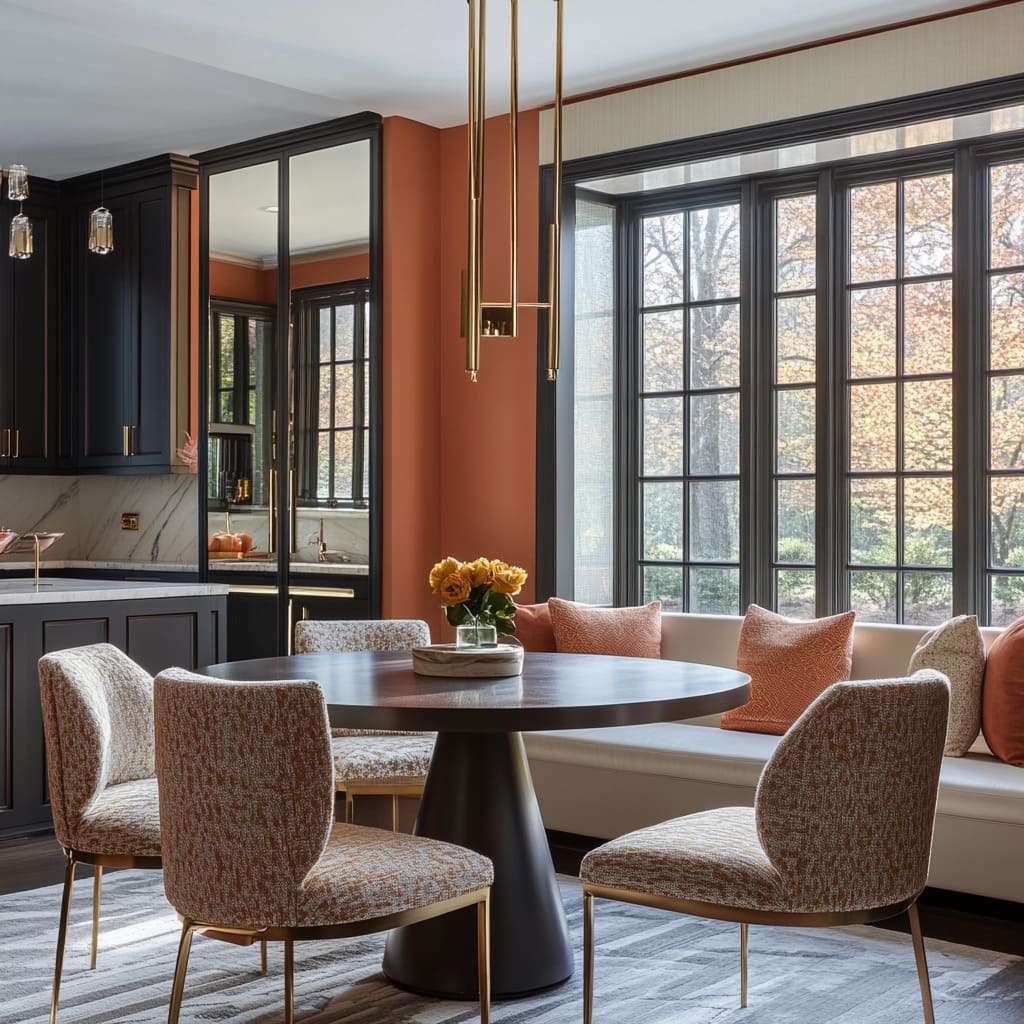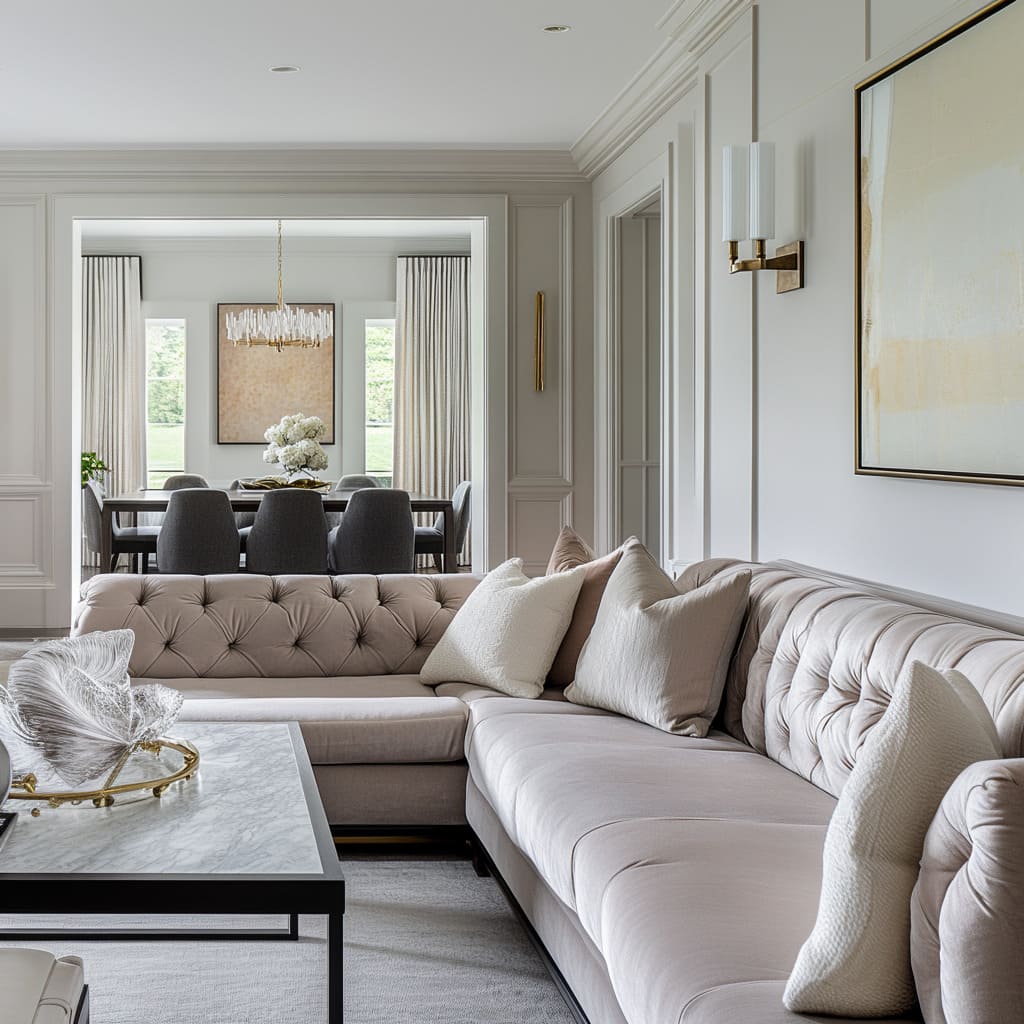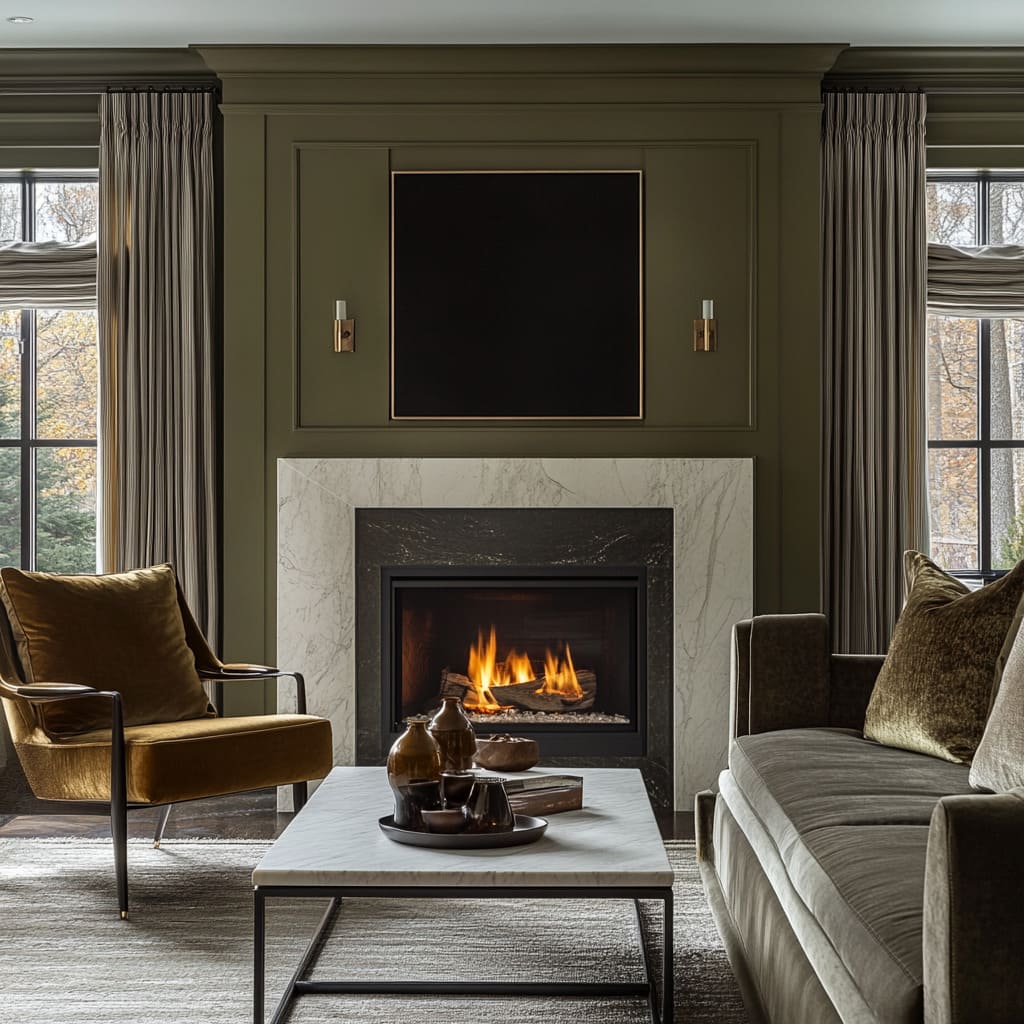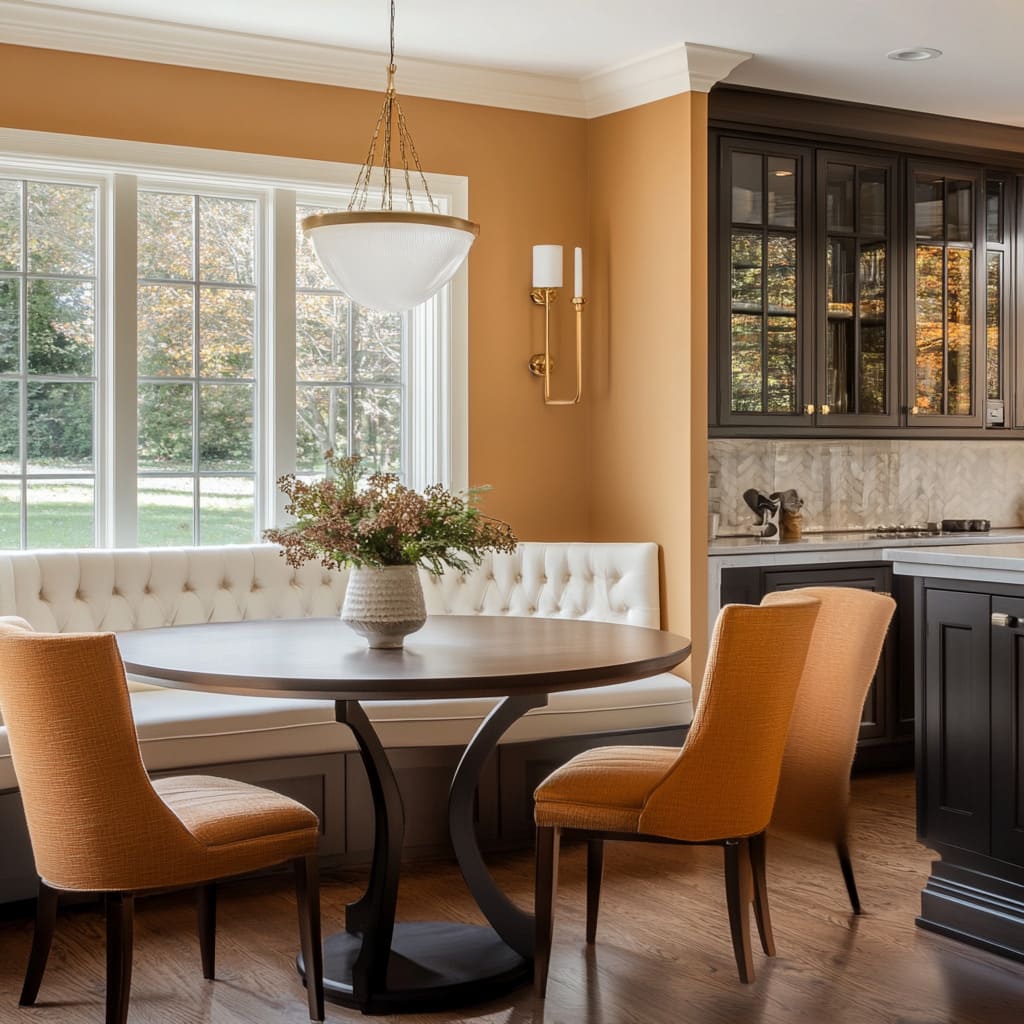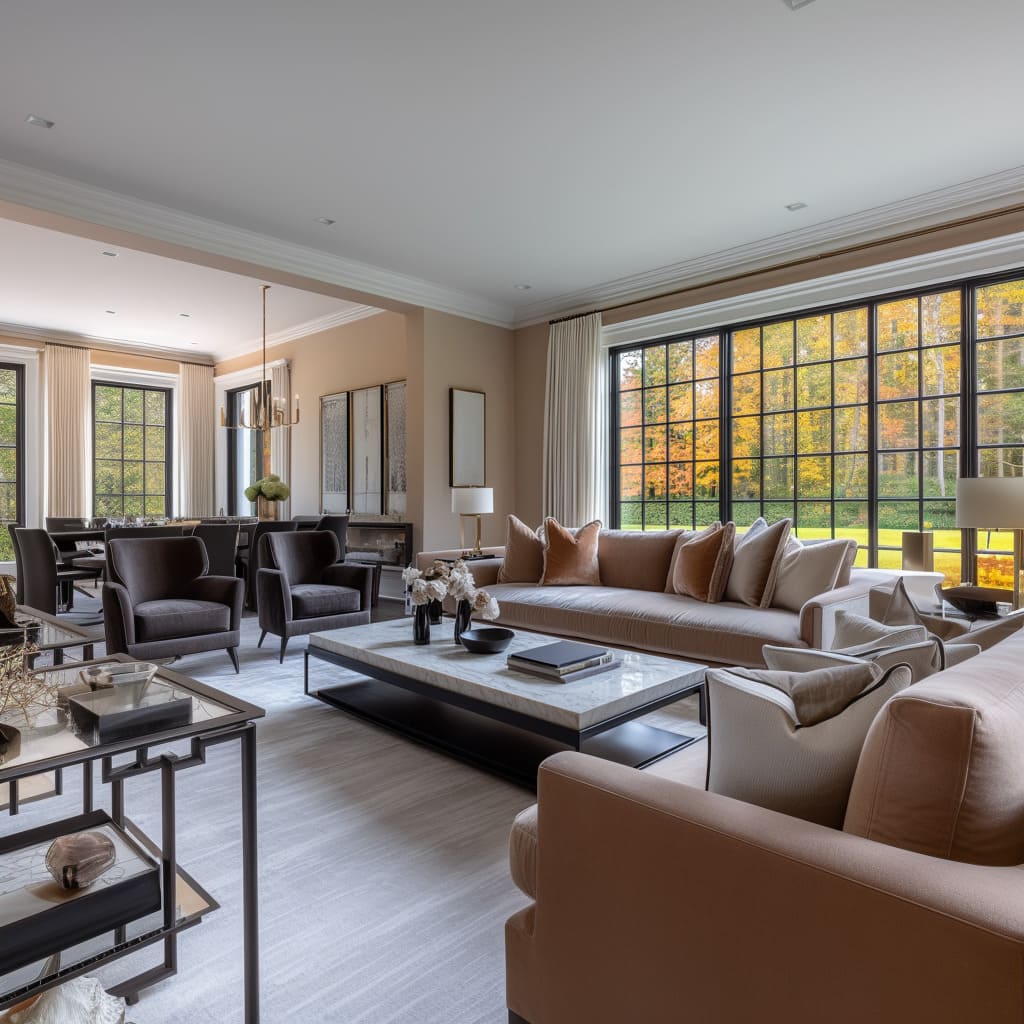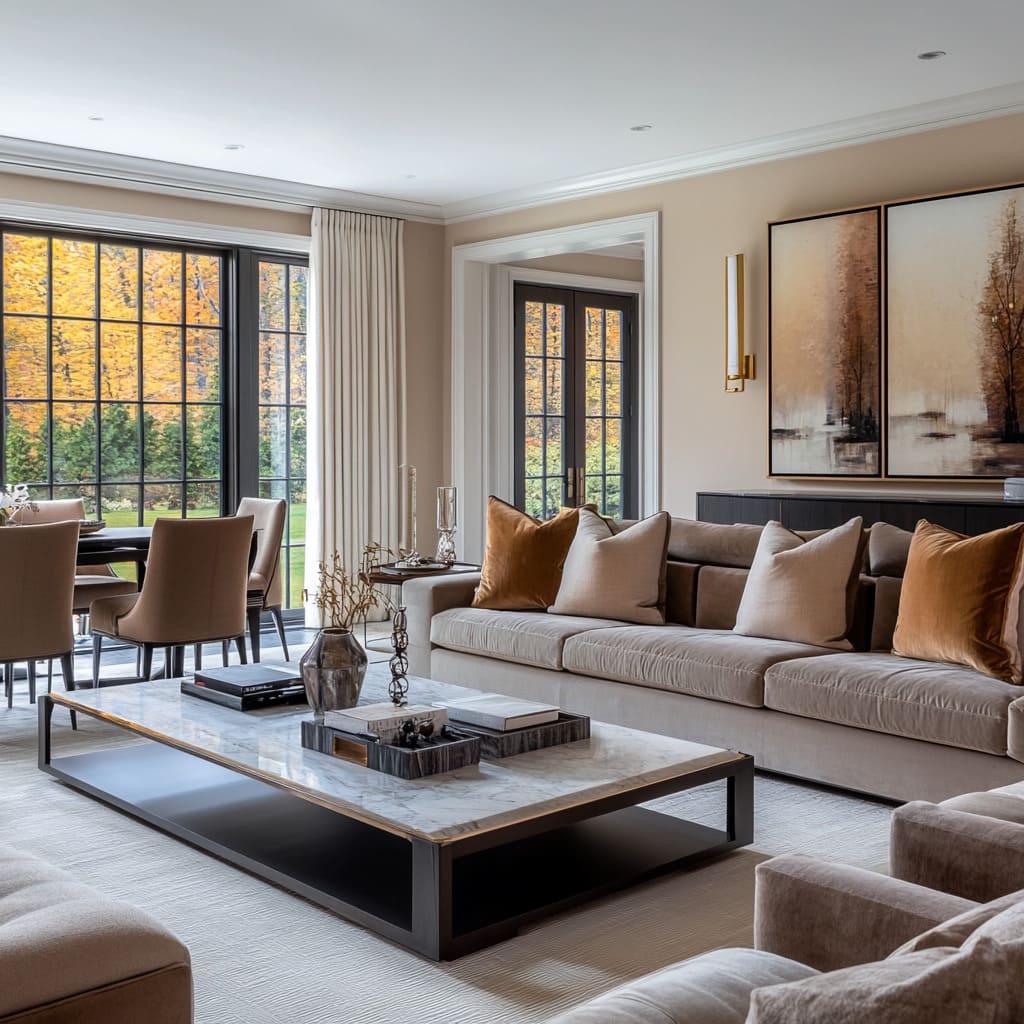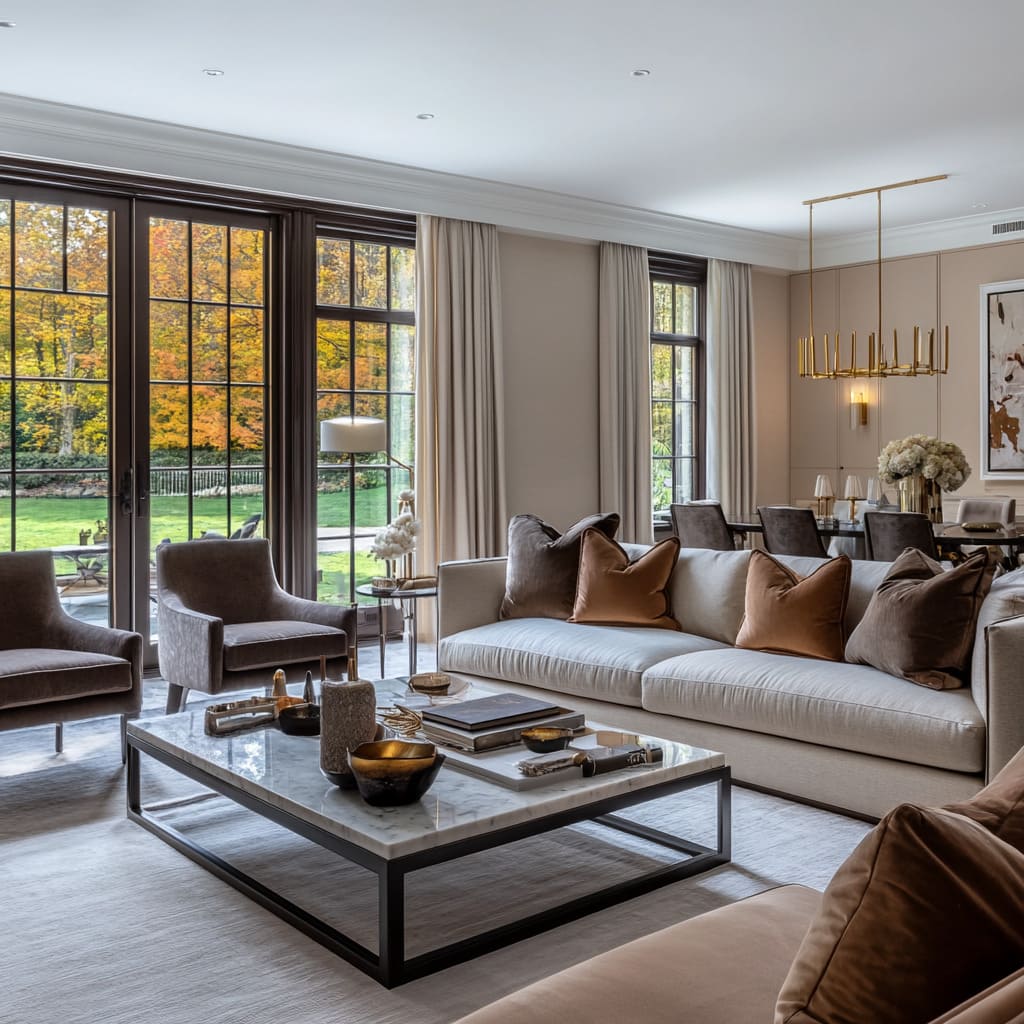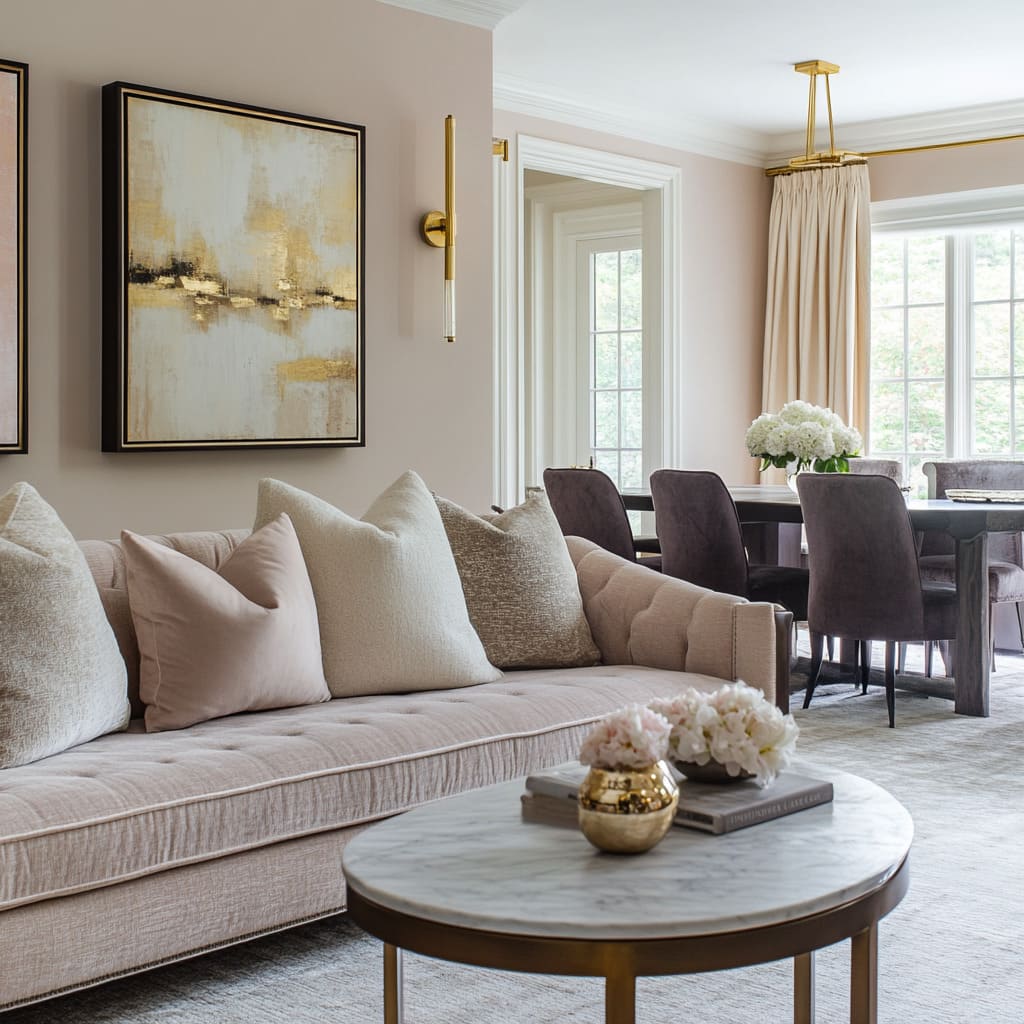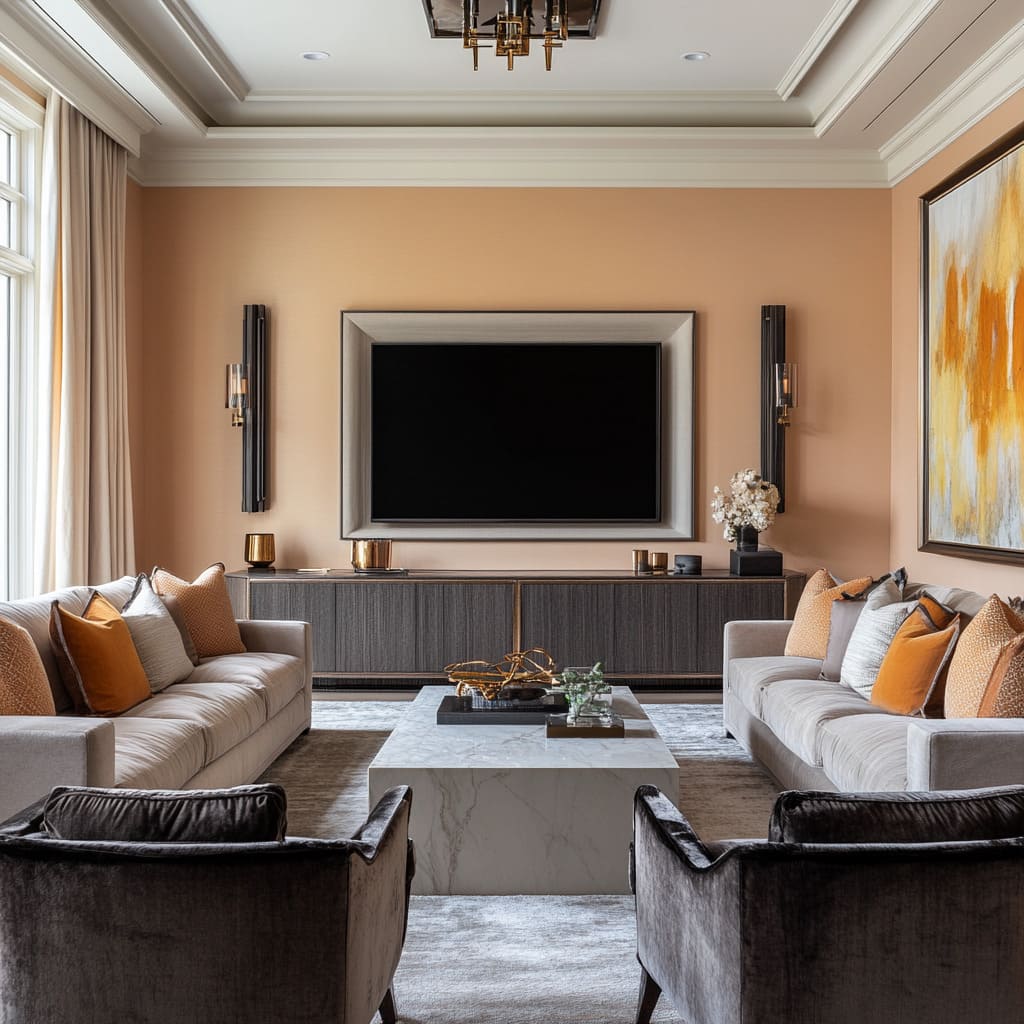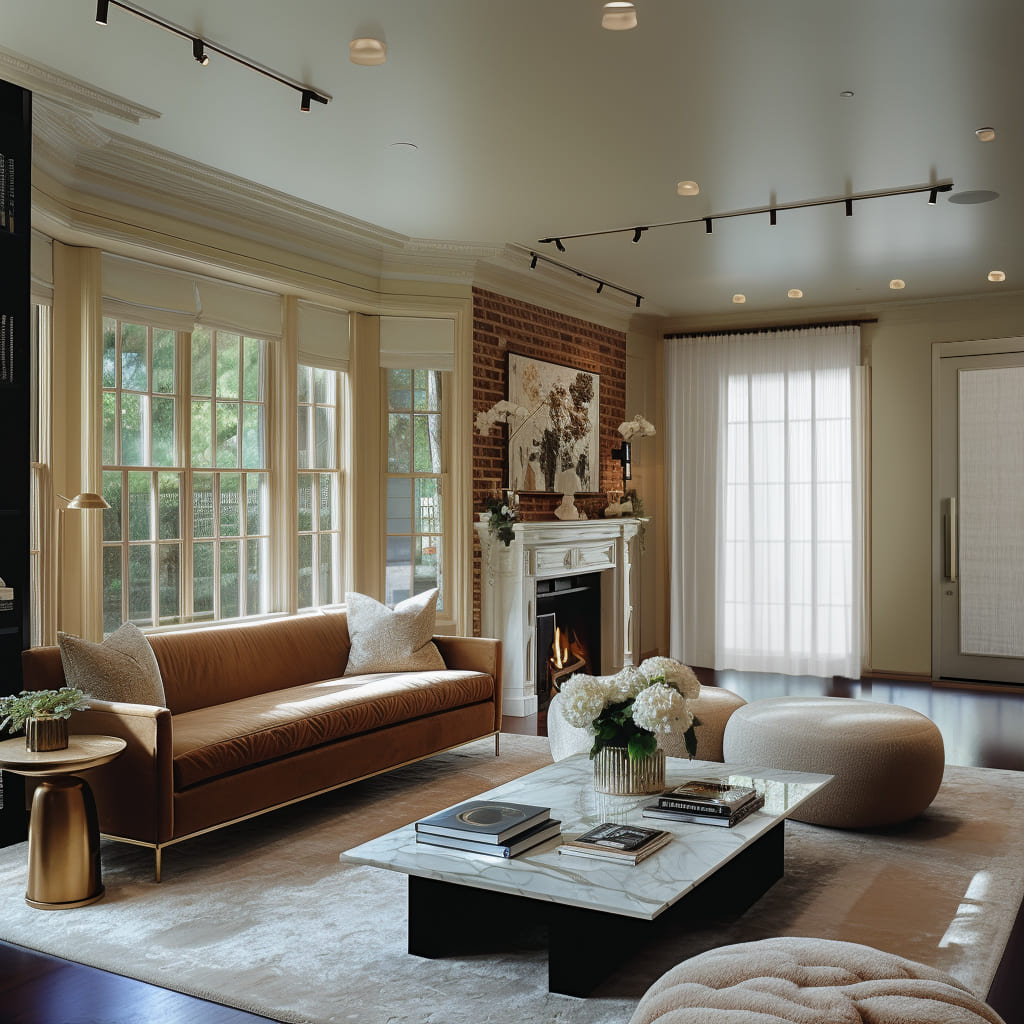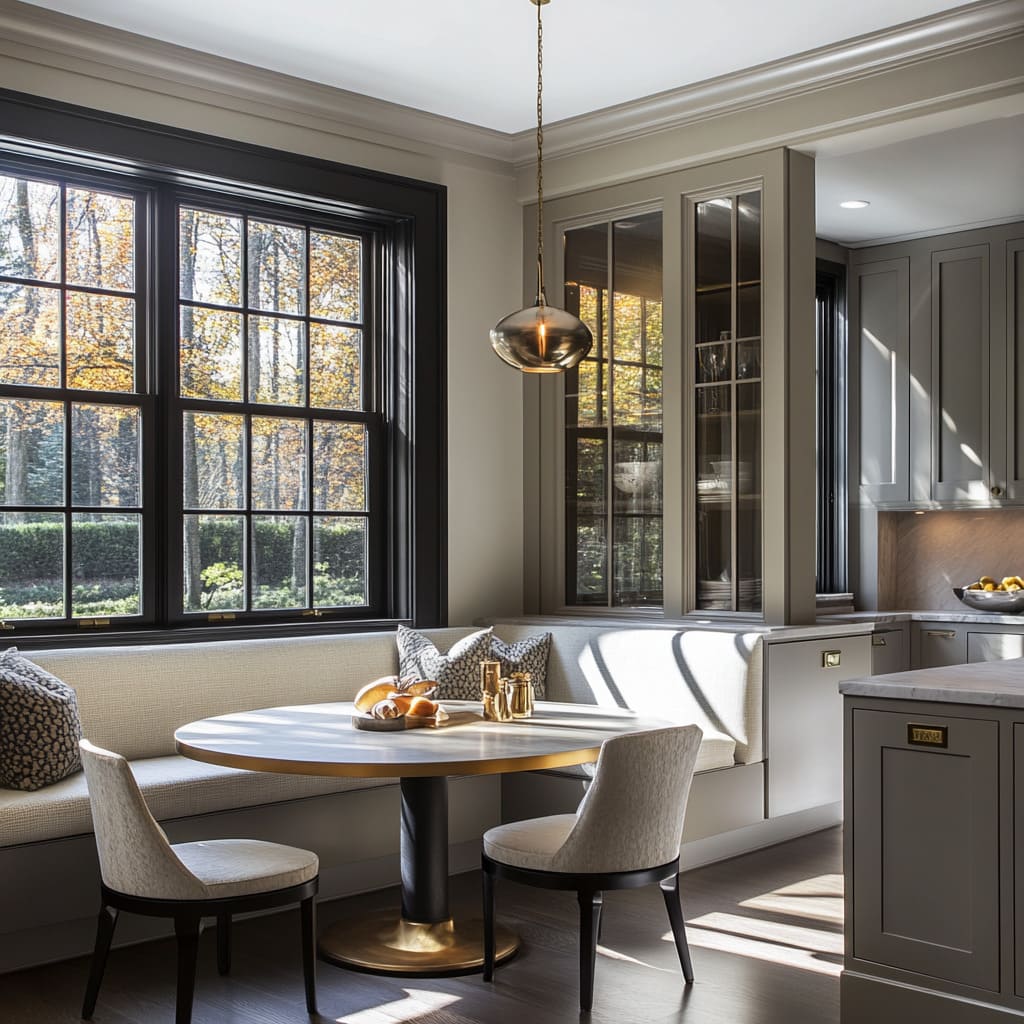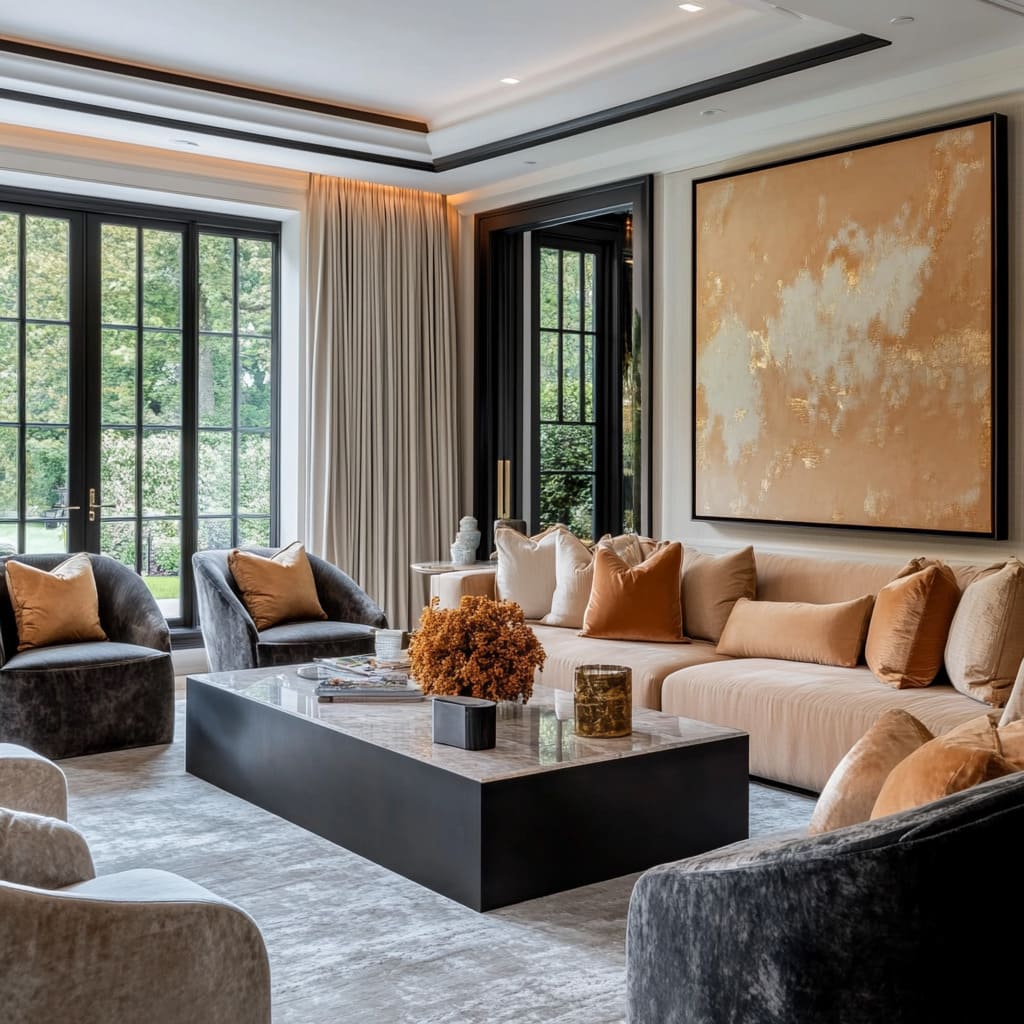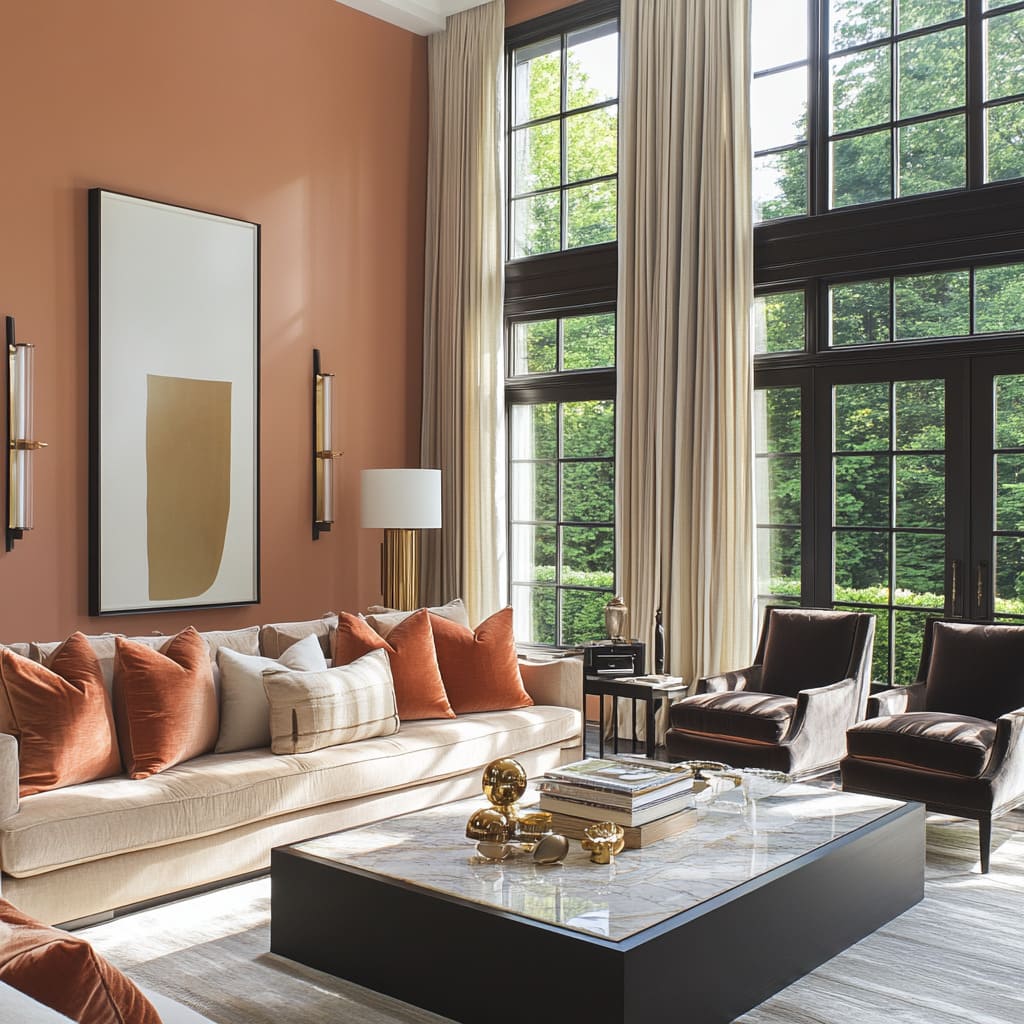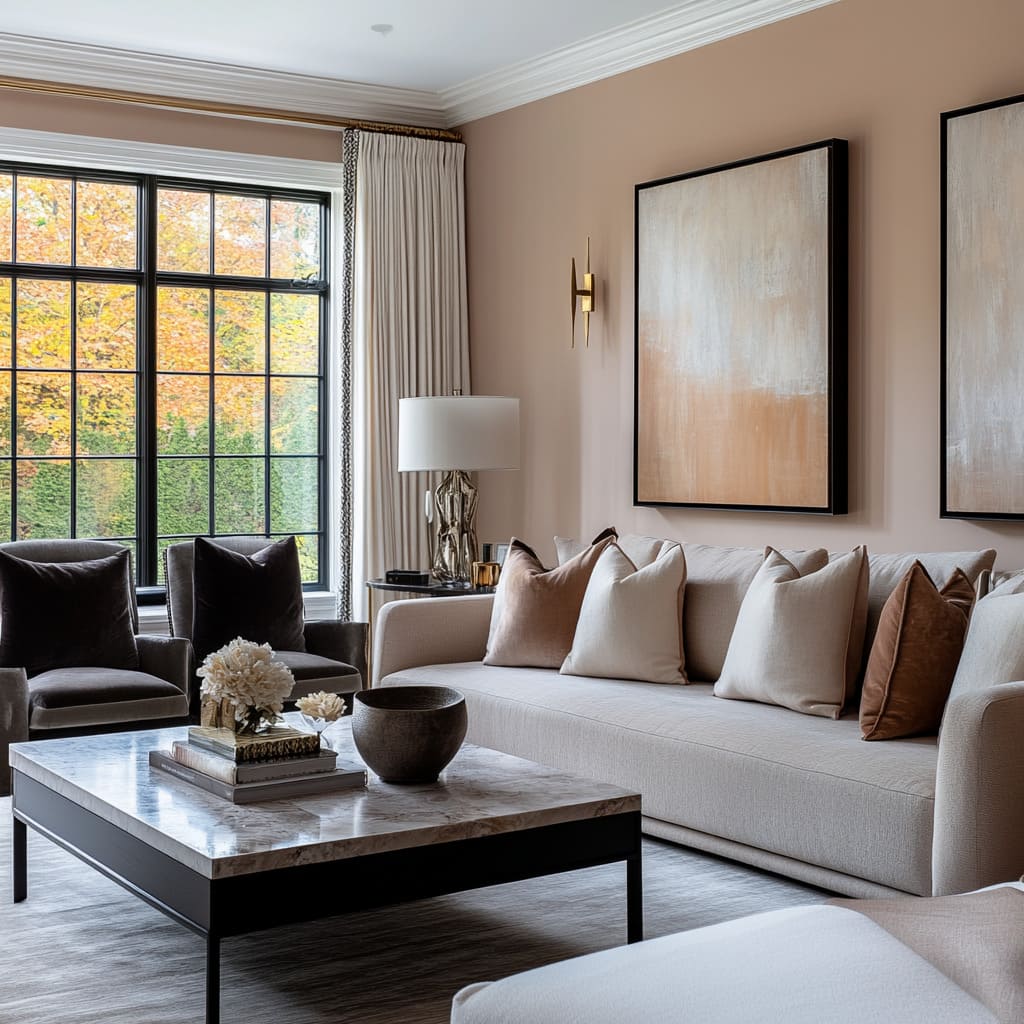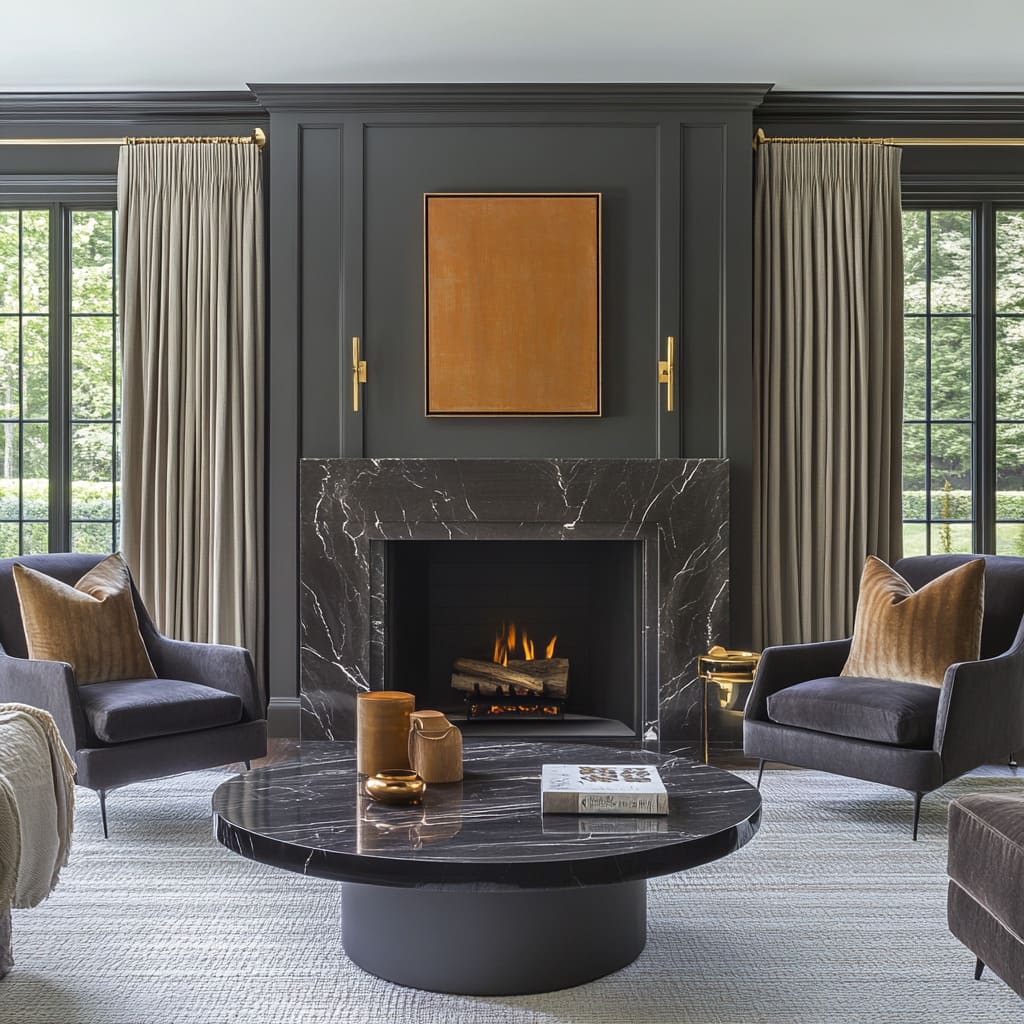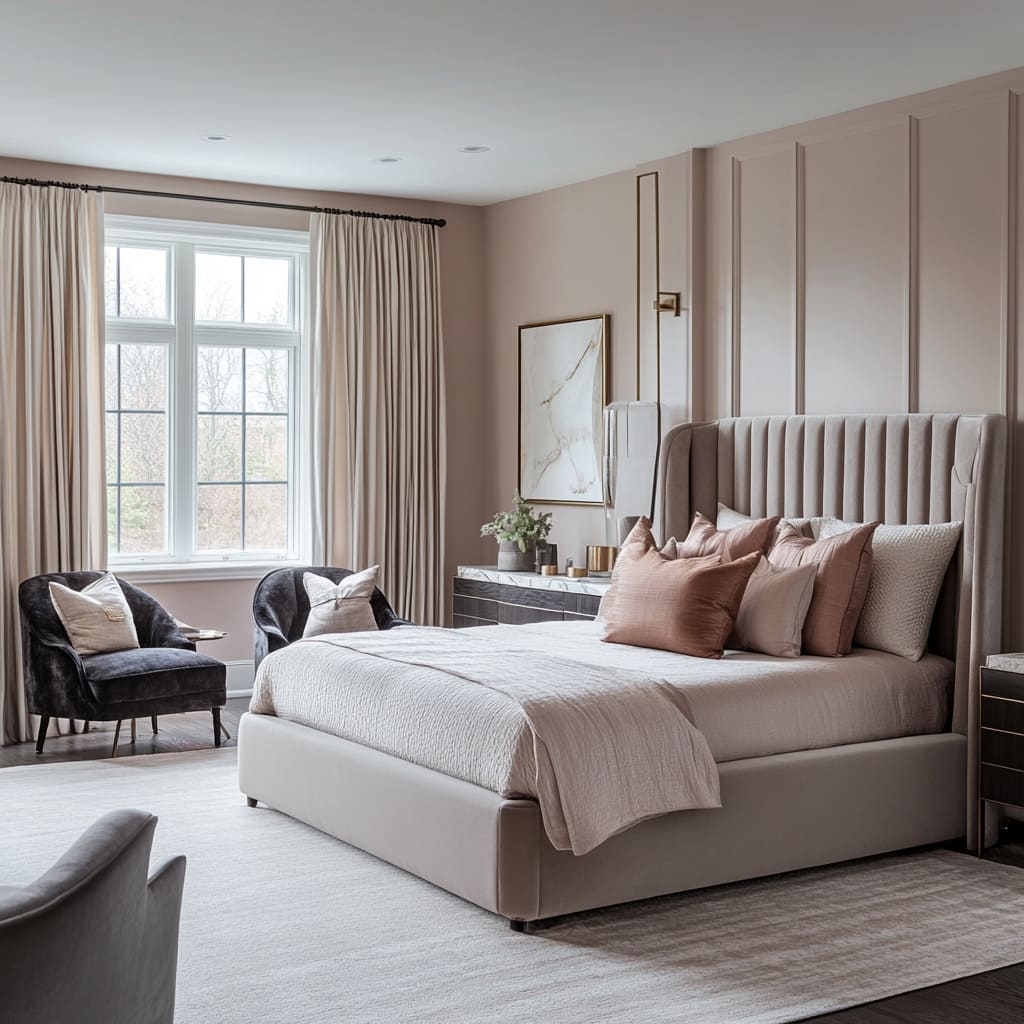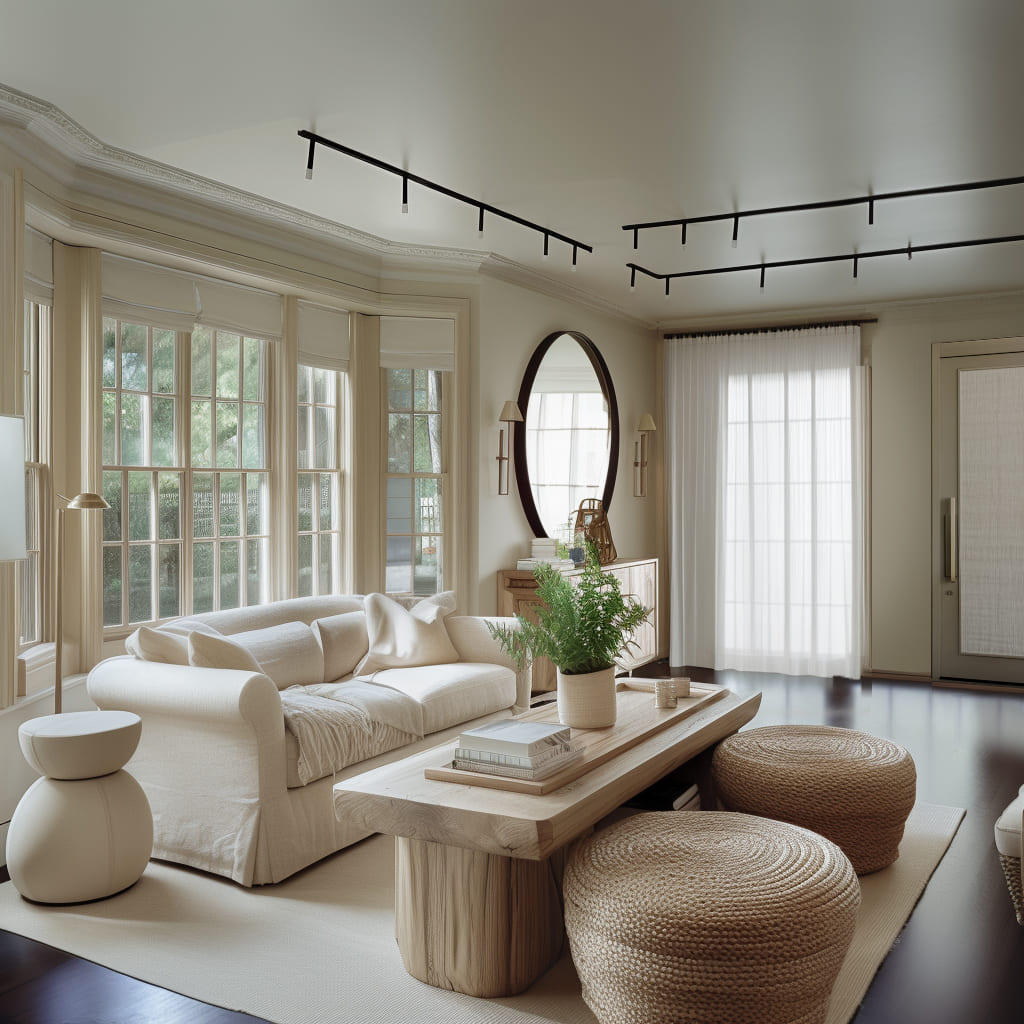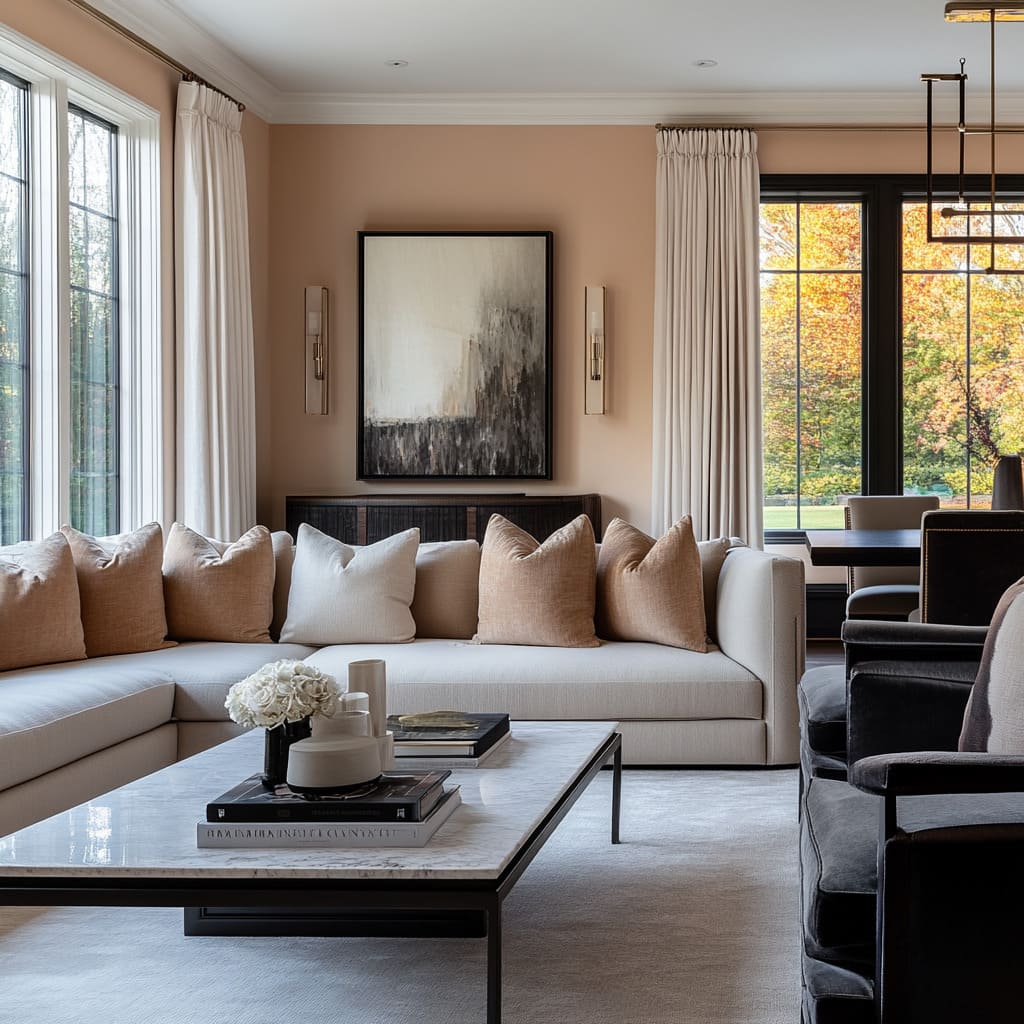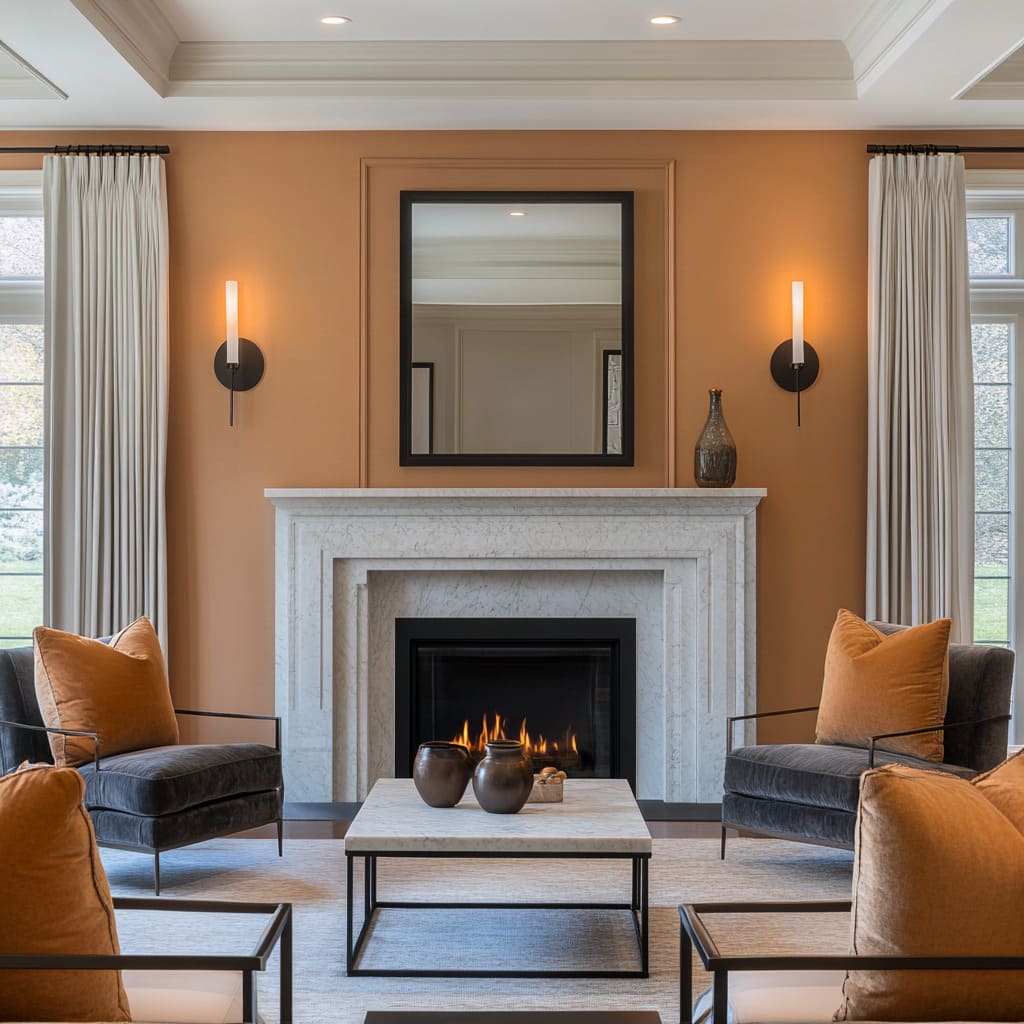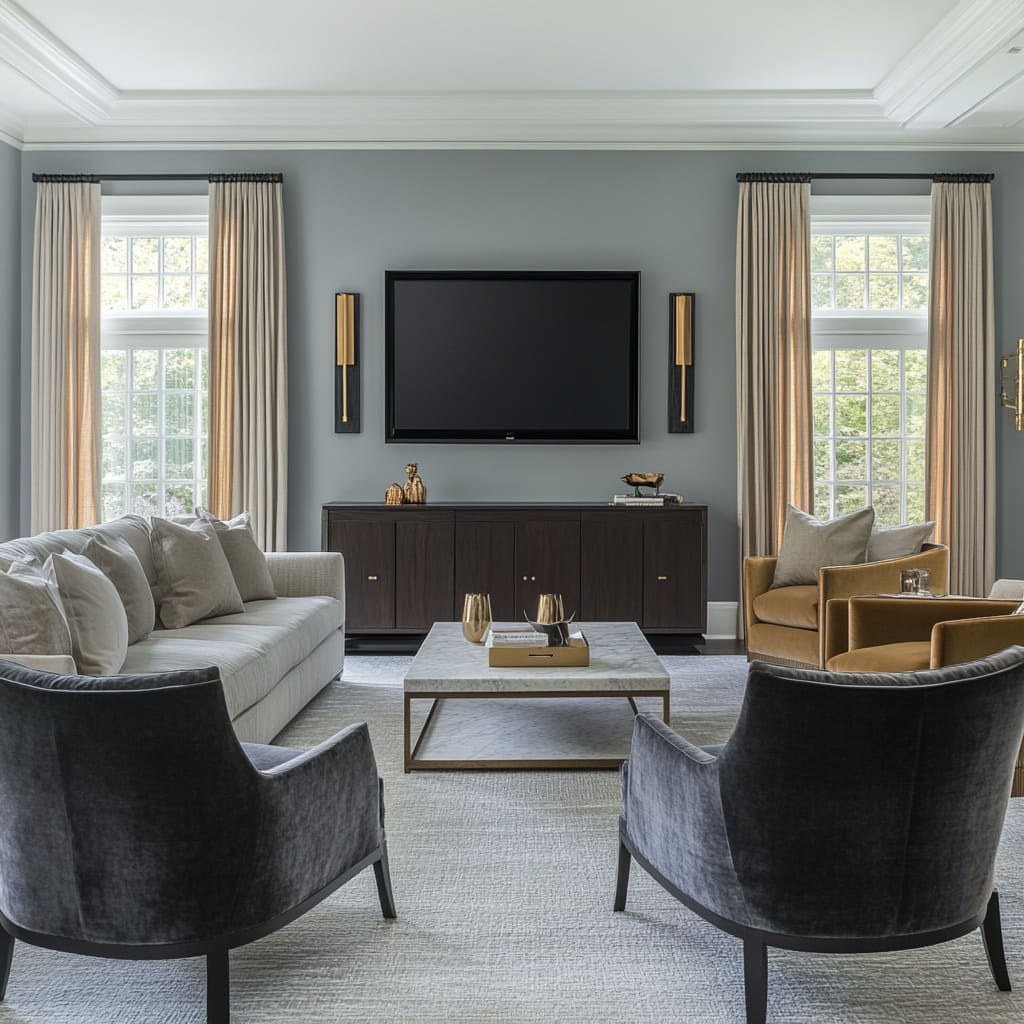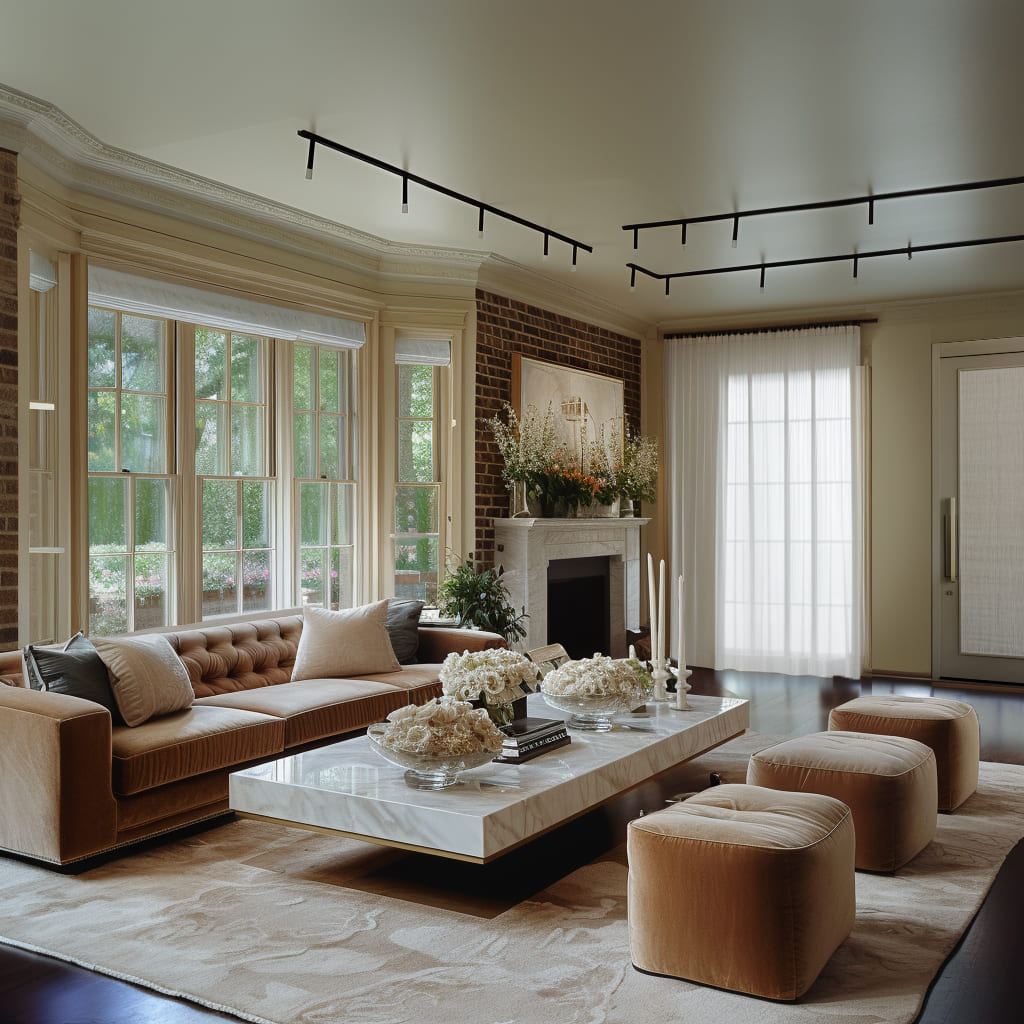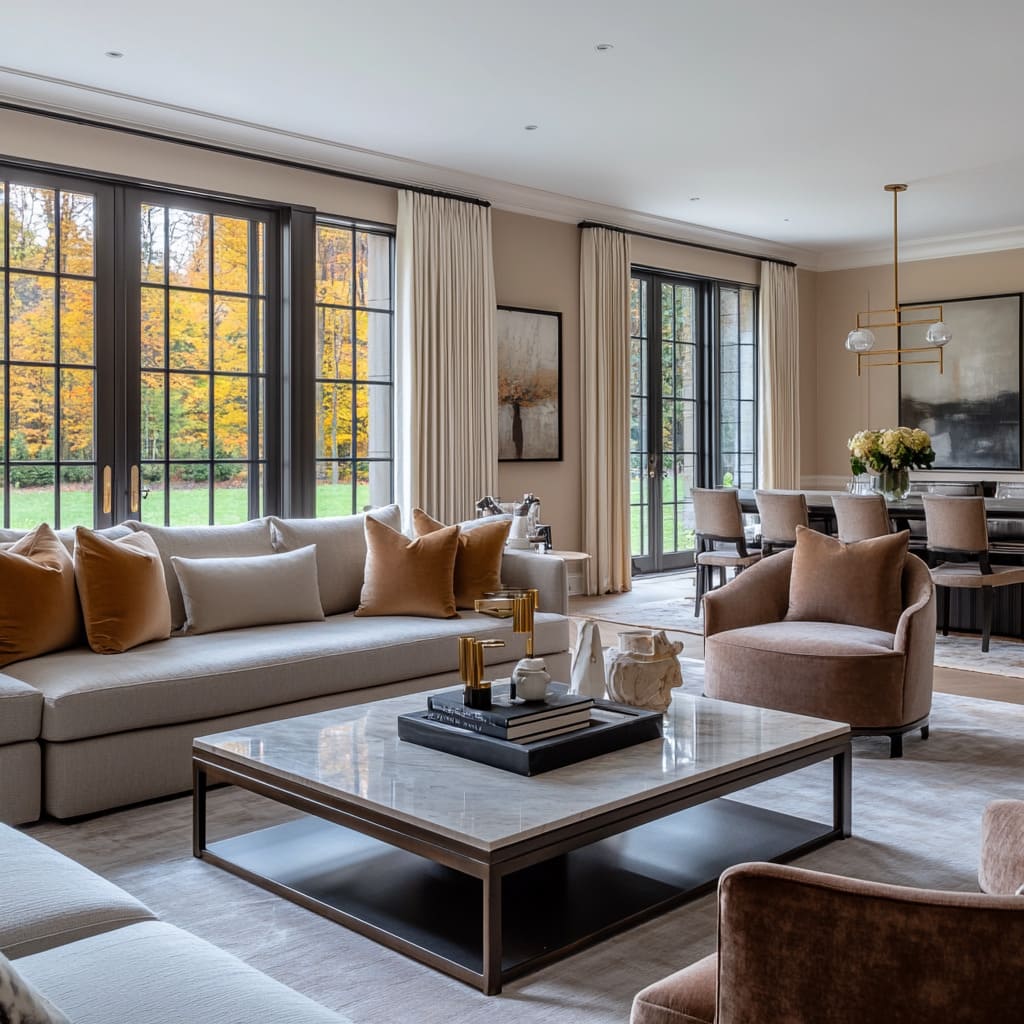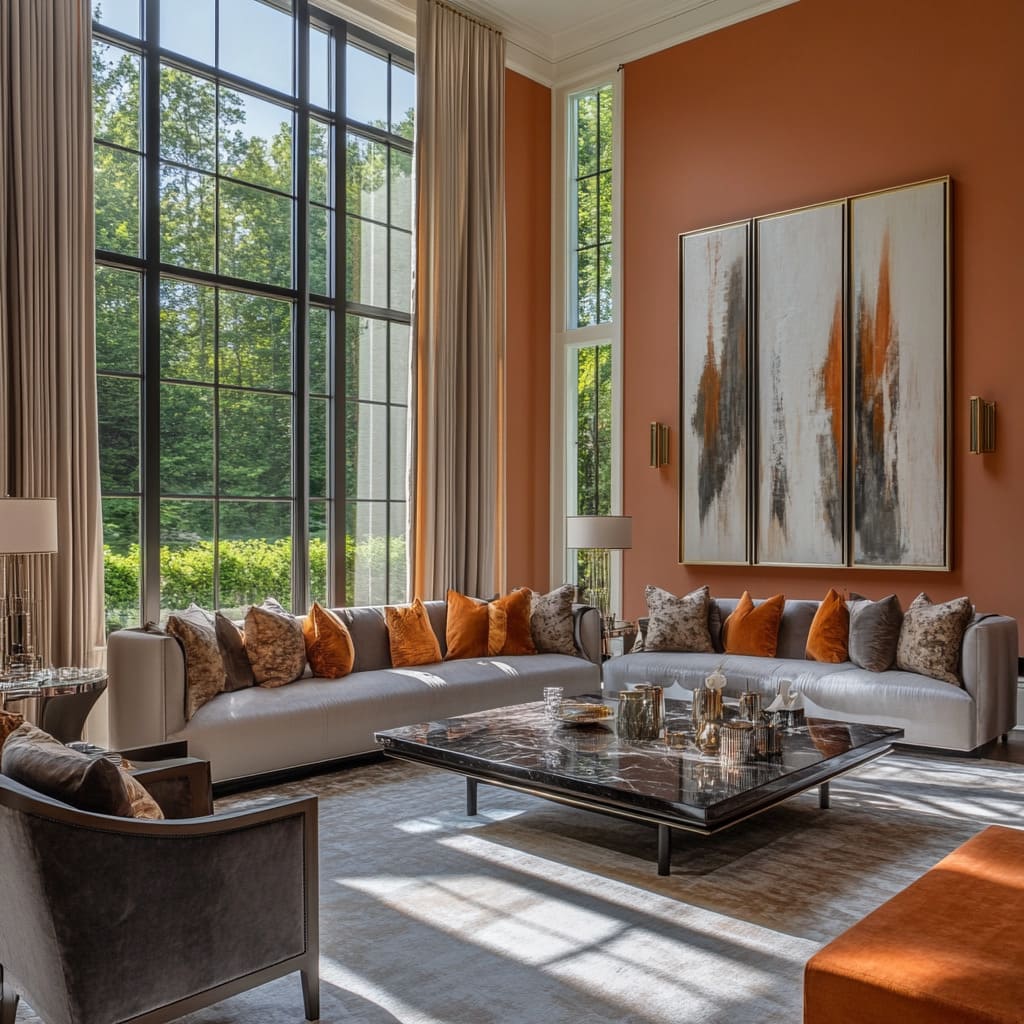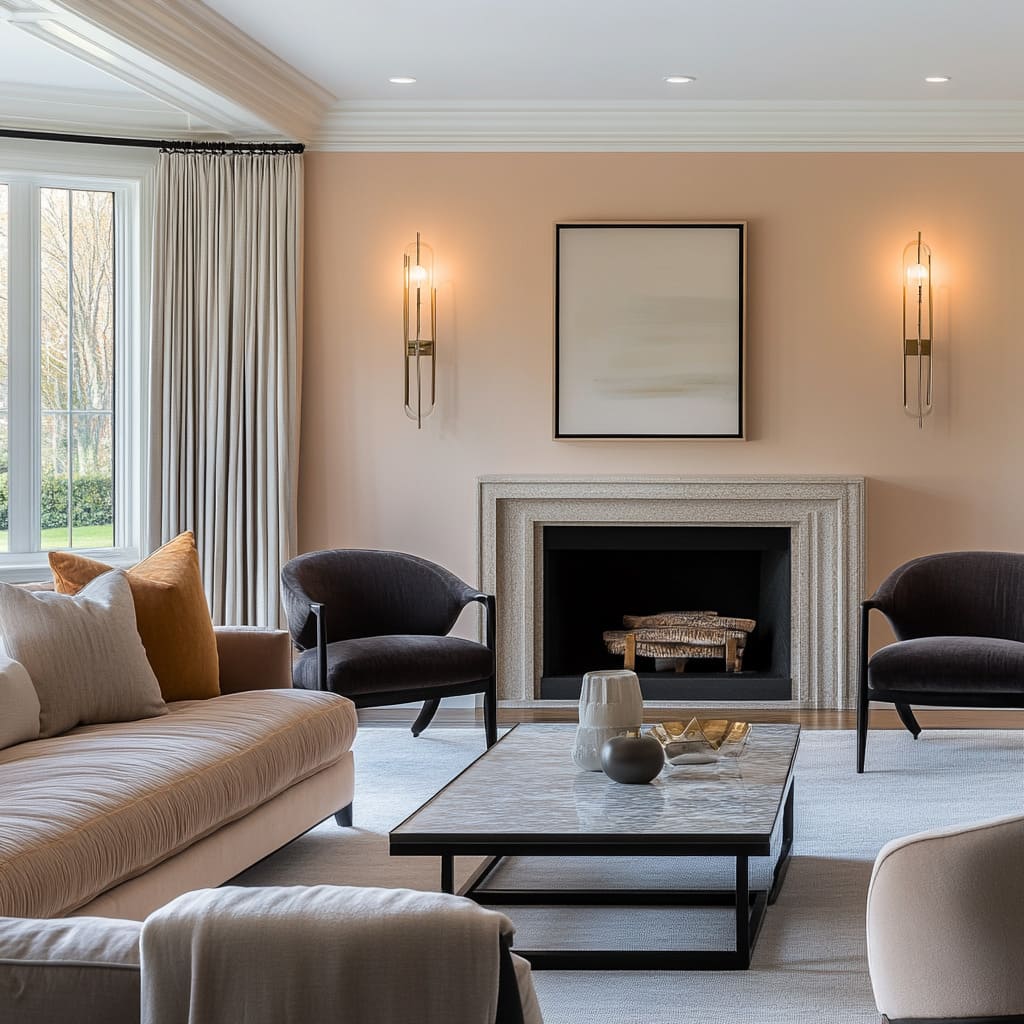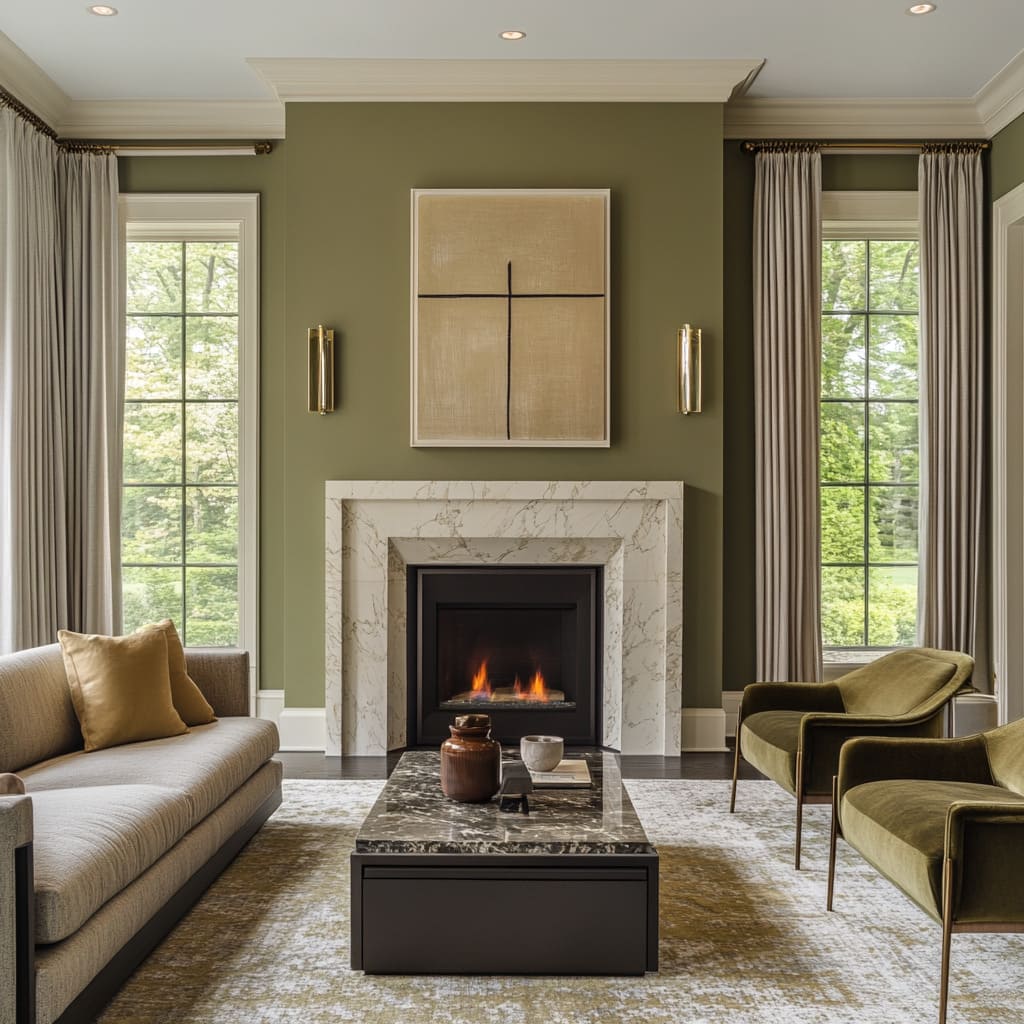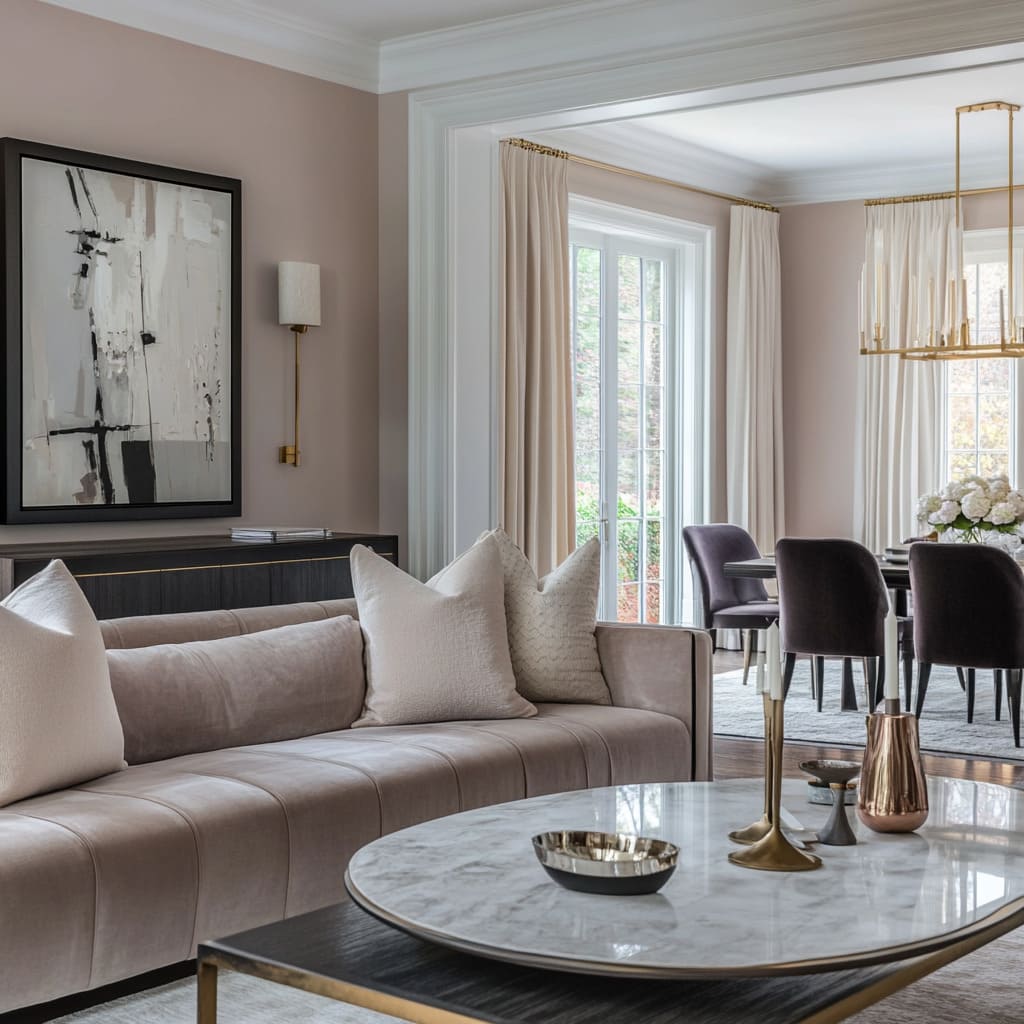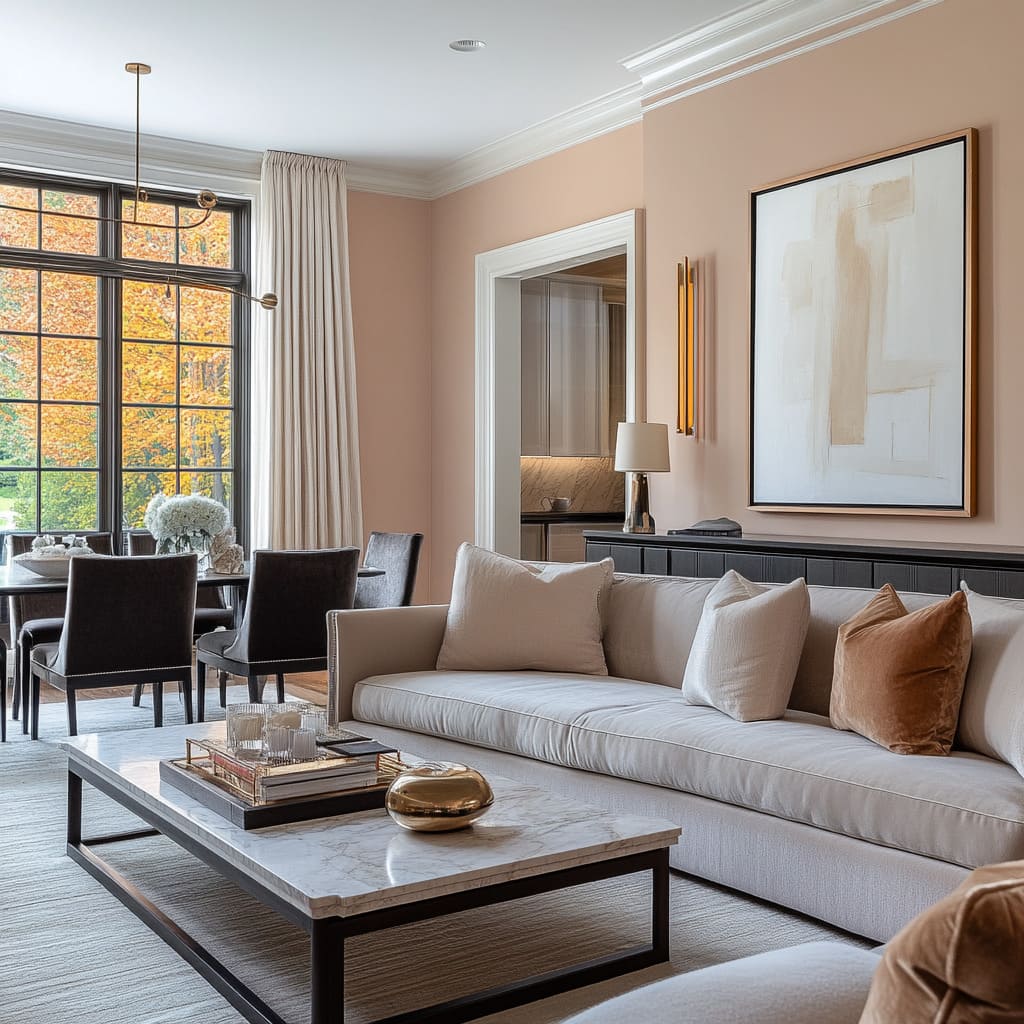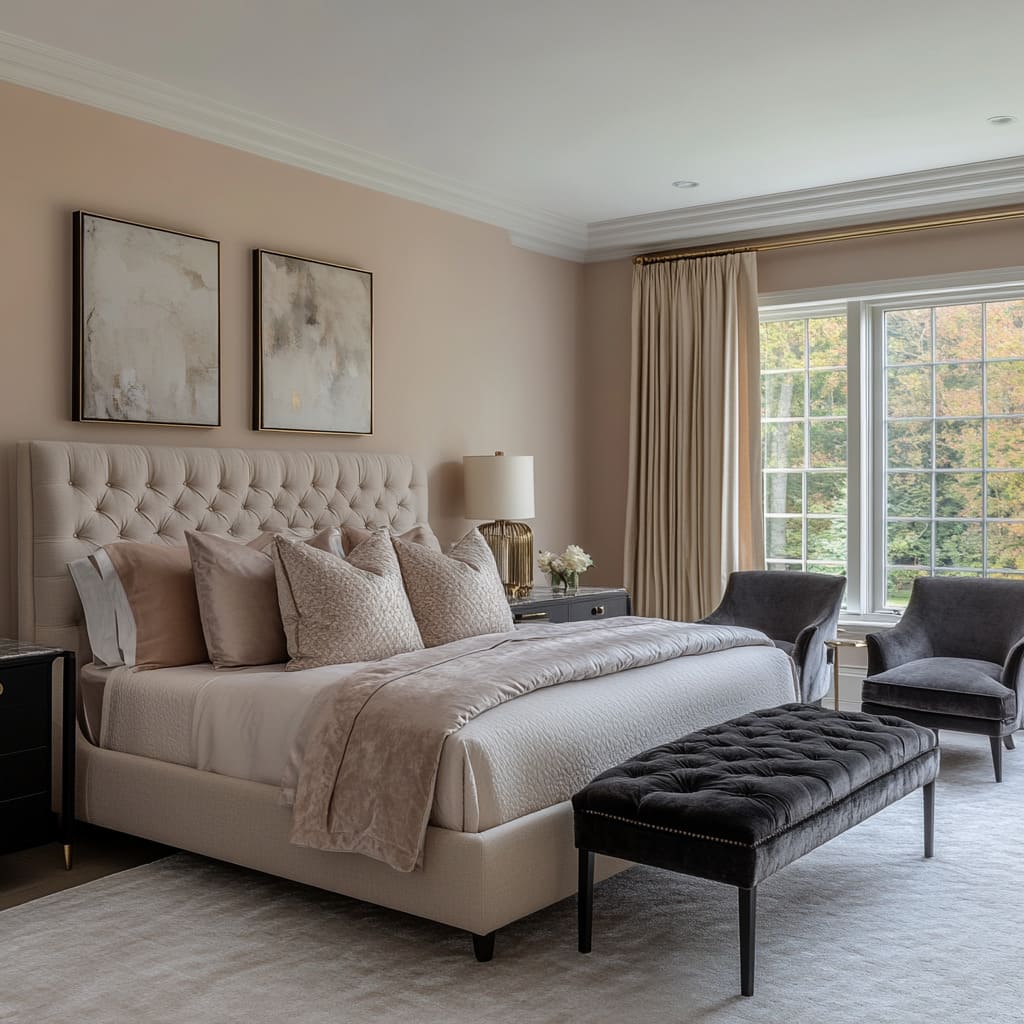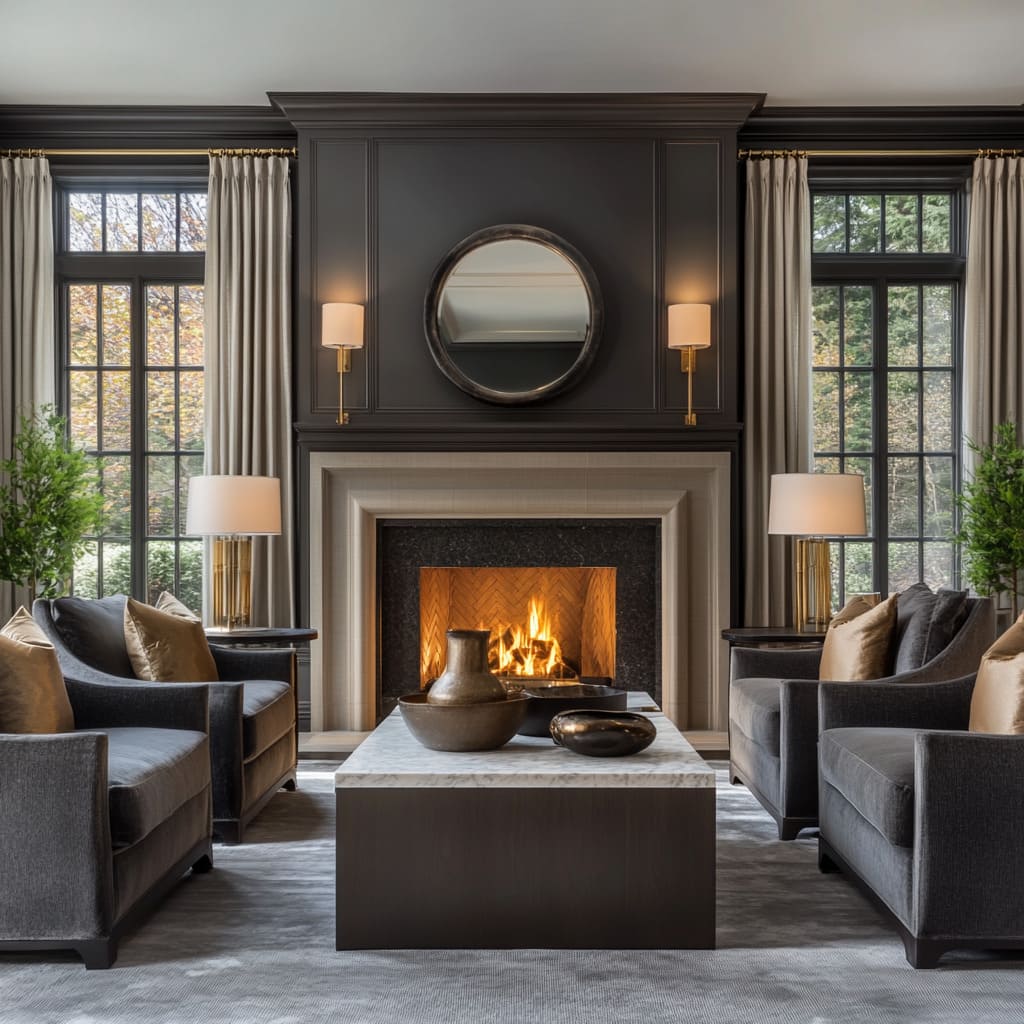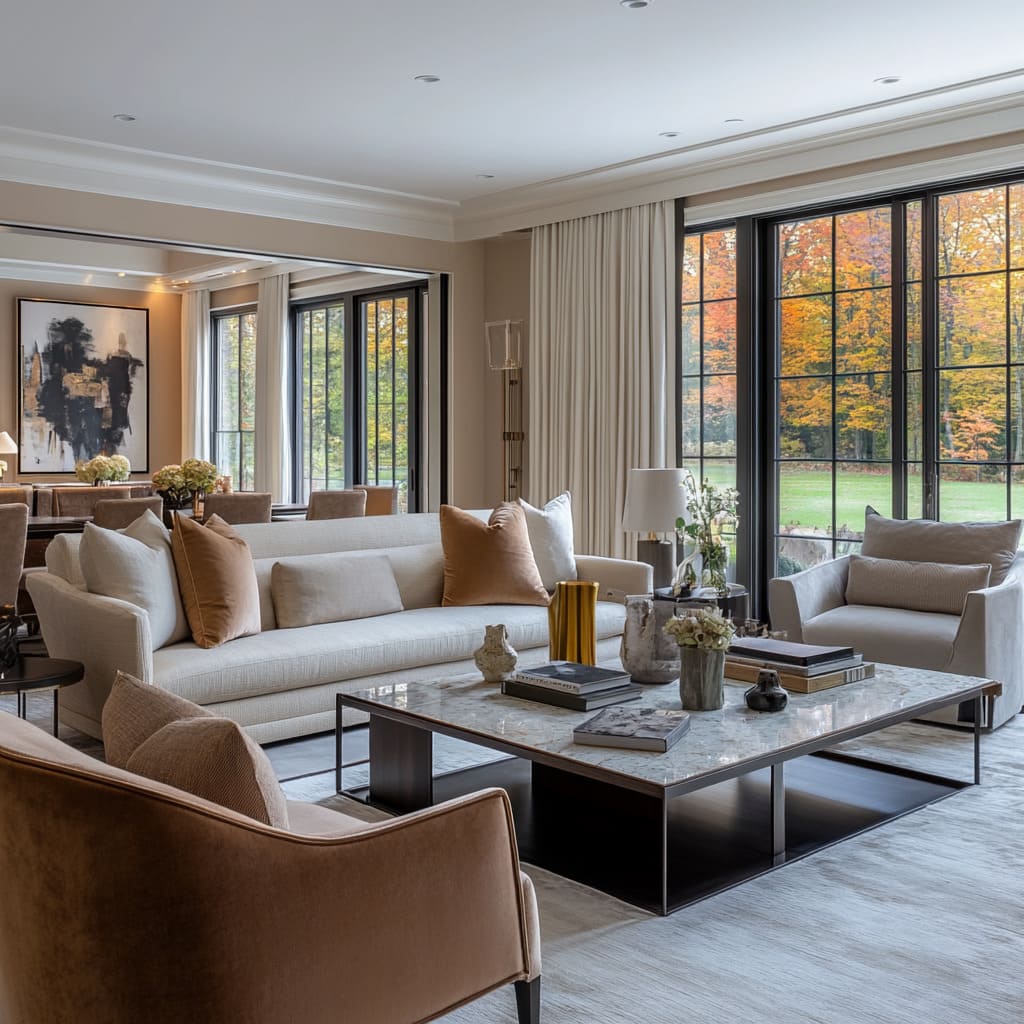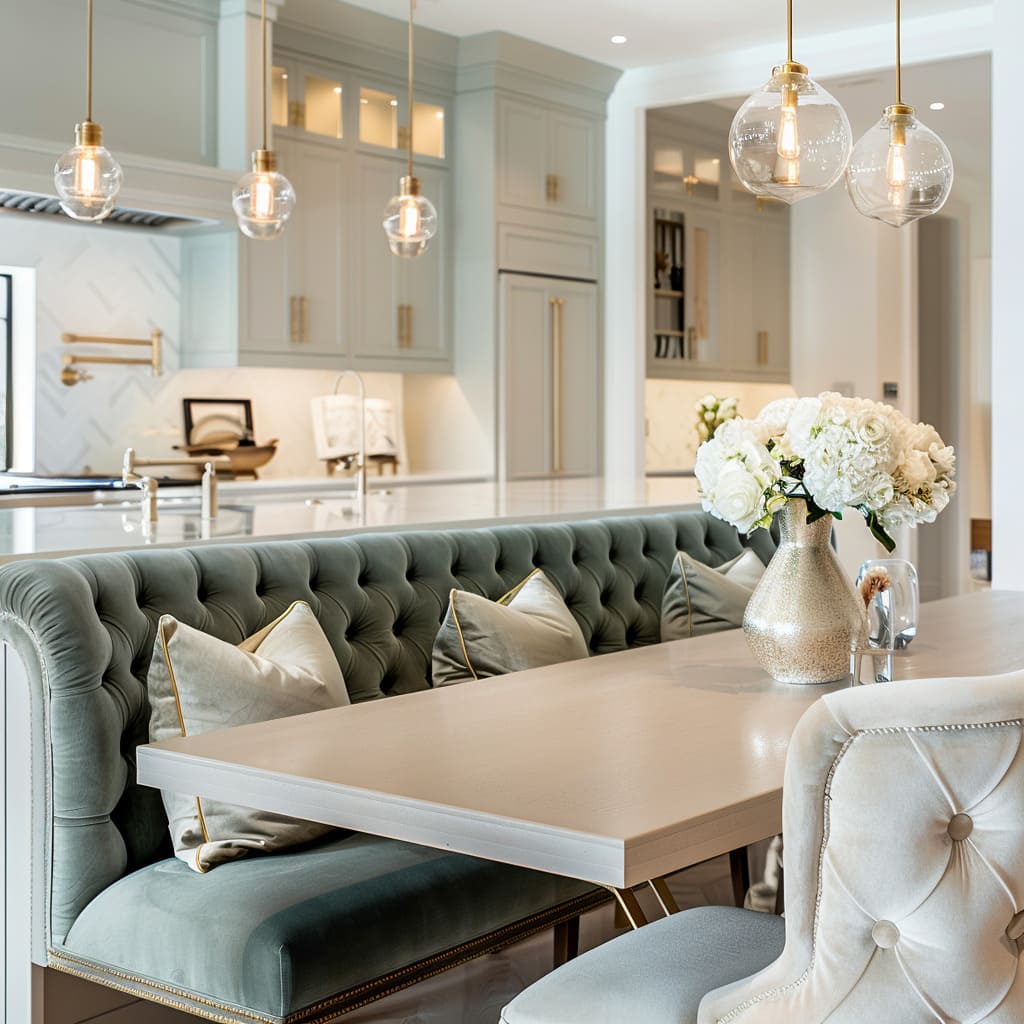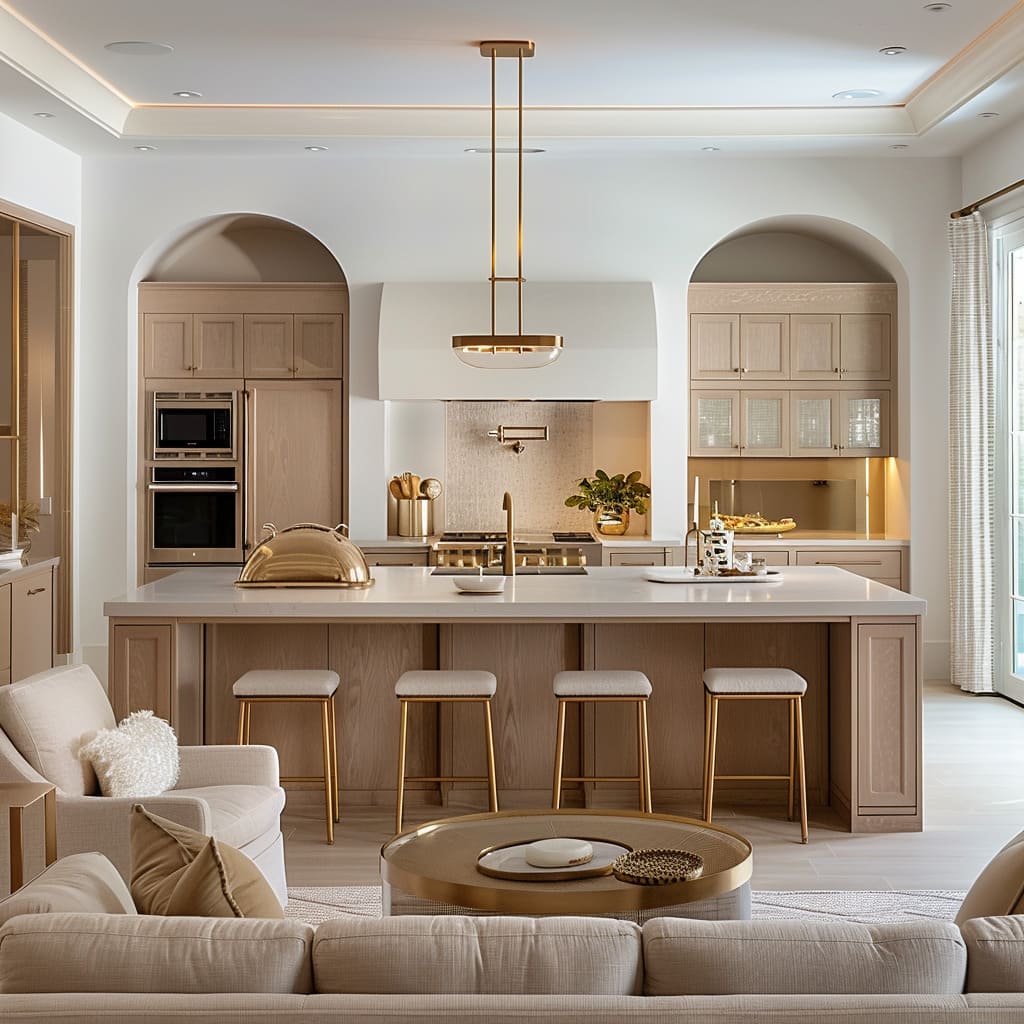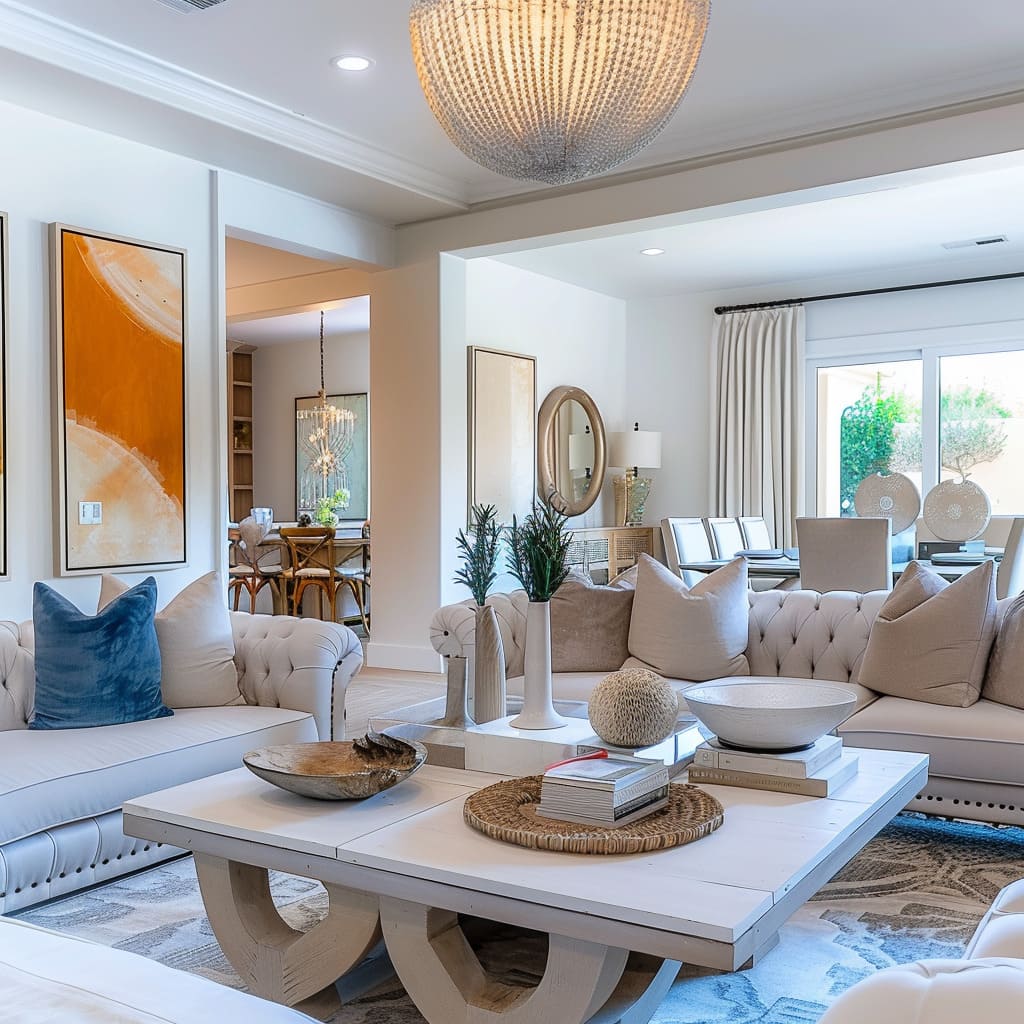Introduction to Warm Color Palettes
Warm color palettes are increasingly becoming a favored choice in modern interior design. Shades like apricot, peach, and terracotta offer a comforting and inviting atmosphere that resonates with contemporary tastes while maintaining a timeless appeal.
These colors evoke a sense of warmth and connection, making them ideal for various living spaces, from living rooms and kitchens to bedrooms. This article explores the growing appeal of these colors, providing detailed insights into how they can be incorporated into different spaces, balanced with other design elements, and paired with complementary materials and textures
How do cultural and regional differences influence the popularity and interpretation of warm color palettes in interior design across various parts of the world?
Cultural and regional differences significantly influence the popularity and interpretation of warm color palettes in interior design, leading to diverse applications and preferences around the world. Cultural significance and symbolism play a major role in this variation.
In Asian cultures, colors like red, orange, and gold, which are close to apricot, peach, and terracotta, are often seen as symbols of prosperity, happiness, and good fortune. For instance, in Chinese culture, red is associated with celebration and is widely used in festive decorations. This cultural significance makes warm palettes more appealing in these regions, resonating deeply with local beliefs and traditions.
Similarly, in Mediterranean regions, terracotta is not just a popular color but also a material that is integral to the architectural style. The warm, earthy tones of terracotta reflect the sunbaked landscapes of Southern Europe and North Africa, embodying the region’s natural environment and cultural identity. These colors are often associated with warmth, hospitality, and a connection to nature, all of which are highly valued in Mediterranean cultures
In Western cultures, particularly in the United States and Europe, the use of warm color palettes can be more trend-driven, influenced by global design trends, fashion, and media. These colors are often employed to create cozy, inviting spaces, especially in homes where comfort is a priority. Climate and environmental factors also heavily influence the use of warm color palettes.
In warmer climates, such as tropical or desert regions, warm colors might be used more sparingly or in muted tones to avoid intensifying the natural heat. In these areas, cooler tones are often preferred to create a sense of balance and provide relief from the warm outdoor climate. Conversely, in cooler climates, like those in Northern Europe or Canada, warm colors are embraced to add warmth and coziness to interiors. The long, cold winters in these regions make colors like apricot, peach, and terracotta particularly appealing for creating a welcoming and intimate atmosphere
Historical and architectural contexts further shape the use of warm colors. In regions with a rich history of certain architectural styles, such as Southern Europe, warm colors naturally align with the existing aesthetic and are used to maintain harmony with traditional designs. This connection to the past can also inspire modern interpretations of these palettes, as people seek to connect with their cultural and architectural heritage.
For example, in the Southwestern United States, warm tones like terracotta are popular due to their connection with Native American and Mexican design influences, which are integral to the region’s cultural identity.
Globalization has also led to the cross-pollination of design trends, where warm color palettes may be popularized in regions where they were not traditionally used. Social media, international design shows, and the work of globally recognized interior designers contribute to the spread of these trends, leading to their adoption in a variety of cultural and regional contexts. In summary, cultural and regional differences play a crucial role in how warm color palettes are perceived and used in interior design.
These differences are shaped by a combination of cultural symbolism, climate, historical architecture, and global influences, resulting in a rich diversity of applications and interpretations across the world
What psychological and emotional impacts do warm colors like apricot, peach, and terracotta have on individuals, and how can these impacts be harnessed to create specific moods in various interior spaces?
Warm colors like apricot, peach, and terracotta are known for their ability to evoke a range of psychological and emotional responses. These colors can influence mood, behavior, and even physiological responses, making them powerful tools in interior design.
Psychological and Emotional Impacts of Warm Colors
Comfort and Warmth: Warm colors such as apricot, peach, and terracotta are often associated with feelings of warmth and comfort. These colors remind us of the sun, fire, and natural elements, which can evoke a sense of safety and coziness.
Apricot and peach, in particular, have a soothing effect, often used in spaces meant for relaxation or intimate gatherings. These colors can make a room feel more welcoming and can help to create a homely atmosphere. Energy and Stimulation: Terracotta, with its deeper, earthier tones, can have a more energizing effect.
This color can stimulate feelings of vigor and passion, making it a great choice for spaces where activity and interaction are encouraged, such as dining areas or kitchens. The richness of terracotta can also evoke a sense of creativity and drive, which can be beneficial in workspaces or areas where focus is needed. Happiness and Optimism: Warm colors are often linked to positive emotions like happiness and optimism.
Peach and apricot hues can uplift the mood of a space, making them ideal for rooms where a light and cheerful ambiance is desired, such as living rooms or bedrooms. These colors can help to create an environment that feels sunny and bright, fostering a sense of well-being and contentment. Intimacy and Connection: Warm tones can also enhance feelings of intimacy and emotional connection.
These colors are often used in spaces where fostering close relationships is important, such as dining rooms or family rooms. The warmth of apricot and terracotta can encourage social interaction and make people feel more at ease, which is particularly beneficial in communal spaces.
Harnessing Warm Colors in Interior Spaces
Living Rooms: In living rooms, apricot and peach can be used to create a cozy and inviting atmosphere.
These colors work well on walls or as accent pieces, such as throw pillows or rugs, to infuse the space with warmth without being overwhelming. Pairing these colors with neutral tones like beige or soft grey can help to balance the vibrancy and create a soothing environment perfect for relaxation and socialization. Bedrooms: In bedrooms, peach is an excellent choice for creating a tranquil and restful space
This color can be used on walls or in bedding to promote relaxation and a sense of calm. The gentle warmth of peach can help to reduce stress and anxiety, making it easier to unwind and fall asleep. Terracotta accents, such as in bedside lamps or artwork, can add depth and richness without disrupting the serene ambiance.
Kitchens and Dining Areas: Terracotta is particularly effective in kitchens and dining areas, where it can stimulate appetite and conversation. This color can be used on walls, backsplashes, or even cabinetry to create a warm and inviting space that encourages family gatherings and social interaction. The energizing properties of terracotta make it ideal for spaces where people come together to share meals and experiences.
Workspaces: In workspaces, the stimulating effects of terracotta can be harnessed to boost creativity and productivity. This color can be used as an accent wall or in decorative elements to infuse the space with energy and drive. Combining terracotta with natural materials like wood can create a balanced environment that feels both invigorating and grounded, helping to maintain focus and motivation
How do trends in technology, sustainability, and environmental awareness influence the selection of warm color palettes in contemporary interior design?
Trends in technology, sustainability, and environmental awareness significantly influence the selection and application of warm color palettes in contemporary interior design. These factors not only shape aesthetic preferences but also drive the ethical and practical choices that designers and consumers make.
Here’s how these trends impact the use of warm colors like apricot, peach, and terracotta:
Technology and Color Production
Advancements in Paint Technology: Modern technology has revolutionized the way colors are produced and applied in interior design. Innovations in paint technology have made it possible to create highly durable, eco-friendly paints with rich, vibrant hues like apricot, peach, and terracotta. These advancements include low-VOC (Volatile Organic Compounds) paints, which are healthier for indoor air quality and reduce the environmental impact of painting projects.
Additionally, new digital tools and apps allow designers and homeowners to visualize color schemes in a space before making any commitments, helping to choose the perfect warm tones that suit their aesthetic needs. Smart Lighting and Its Impact on Color Perception: The integration of smart lighting technology in homes allows for the adjustment of light temperatures and intensities, which can significantly influence how warm colors appear in a space.
Warm LED lighting, for instance, can enhance the natural warmth of colors like terracotta and peach, creating a more inviting and cozy atmosphere. This flexibility in lighting encourages the use of warm color palettes, as spaces can be easily adapted to different moods and times of day
Sustainability and Eco-Friendly Design
Eco-Friendly Materials and Finishes: Sustainability has become a key consideration in contemporary interior design, and this extends to the selection of color palettes. Warm colors that are derived from natural pigments or those that complement sustainable materials like reclaimed wood, bamboo, and organic fabrics are increasingly popular. These eco-friendly materials often pair well with warm tones, creating a cohesive and environmentally conscious design.
For example, terracotta, which is often used in sustainable architecture, naturally complements other green materials, making it a favored choice in eco-conscious designs. Sustainable Color Trends: The push towards sustainability has also influenced the popularity of warm, earthy tones that reflect a connection to nature.
Colors like terracotta are not only aesthetically pleasing but also resonate with the environmental movement’s emphasis on natural and organic elements. This trend is partly driven by a desire to create spaces that feel grounded and connected to the earth, aligning with broader environmental values
Understanding Warm Tones
Warm tones such as apricot, peach, and terracotta are known for their ability to evoke feelings of comfort, security, and relaxation. These hues are reminiscent of natural elements like sunsets, autumn leaves, and earthen clay, which inherently create a connection to nature and a sense of well-being.
As people increasingly seek to create inviting sanctuaries within their homes, these colors offer the perfect balance of warmth and sophistication. Historically, warm colors have been used across different cultures to create welcoming spaces.
For example, terracotta has been a staple in Mediterranean design for centuries, symbolizing the warmth of the sun and earth. Today, these colors are being reimagined in modern interiors, often paired with contemporary furnishings and clean lines to create spaces that feel both timeless and fresh.
What are the potential challenges and considerations for integrating warm tones in interior design when dealing with varying levels of natural light in a space?
Integrating warm tones like apricot, peach, and terracotta in interior design can be influenced by various levels of natural light in a space. Here are some potential challenges and considerations: Natural light changes throughout the day, and these changes can significantly alter how warm tones are perceived. In rooms with abundant natural light, colors like apricot and peach can appear more vibrant and may even take on a slightly different hue depending on the time of day.
Conversely, in spaces with limited natural light, these colors might look duller or darker, losing some of their warmth and vibrancy. The direction a room faces can greatly impact the quality of light it receives. South-facing rooms generally get the most consistent light throughout the day, which can enhance the warmth of colors like terracotta.
North-facing rooms, on the other hand, often receive cooler, indirect light, which might make warm tones appear muted or washed out. Designers need to consider these factors when selecting paint colors and furnishings to ensure the intended effect is achieved
To counteract the natural variations in light, it’s important to select artificial lighting that complements warm tones. Warm LED lights can enhance the natural warmth of apricot, peach, and terracotta, making them appear cozy and inviting even in low-light conditions. However, cooler artificial lighting can clash with these colors, making them appear less warm and even creating an undesirable contrast.
This balance between natural and artificial light needs to be carefully managed to maintain the desired atmosphere. Warm tones can make a space feel more intimate and cozy, which can be beneficial in large, open rooms. However, in smaller spaces, these colors might make the room feel even smaller, especially if the natural light is limited.
This could be mitigated by pairing warm tones with lighter neutrals or incorporating mirrors and reflective surfaces to enhance the sense of space and light. The emotional impact of warm tones is closely tied to how they interact with natural light. In spaces where natural light is minimal, warm tones might create a more subdued, calming atmosphere, whereas in well-lit spaces, the same colors might energize the room.
Designers must consider the intended mood of the space and how varying levels of natural light will affect this. When integrating warm tones in interior design, understanding the dynamics of natural light is crucial.
Designers must consider how light intensity, room orientation, and the interplay between natural and artificial lighting will influence color perception. By addressing these challenges and making thoughtful choices, warm tones like apricot, peach, and terracotta can be effectively used to create spaces that are both visually appealing and emotionally resonant.
How have modern trends in minimalism and the use of neutral color palettes impacted the adoption and popularity of warm tones like apricot, peach, and terracotta in contemporary interior design?
Modern trends in minimalism and the use of neutral color palettes have both influenced and challenged the adoption and popularity of warm tones like apricot, peach, and terracotta in contemporary interior design. Influence of Minimalism and Neutral Palettes.
Minimalism’s Impact: Minimalism, with its emphasis on simplicity, clean lines, and a pared-down aesthetic, has often favored a neutral color palette. Colors like white, grey, and beige dominate minimalist interiors due to their ability to create a calm, uncluttered environment. These neutral tones are chosen for their versatility and the way they allow the architectural features and furniture to stand out without overwhelming the space.
However, the trend toward minimalism has also led to a heightened appreciation for warm tones like apricot, peach, and terracotta, as they can be used sparingly to add warmth and depth to otherwise neutral spaces. In minimalist interiors, these colors are often introduced through accent pieces, such as a single wall, artwork, or textiles, creating a focal point without disrupting the overall serenity of the design. Neutrals as a Backdrop for Warm Tones: The widespread use of neutral color palettes in contemporary design has set the stage for warm tones to be used in more subtle and sophisticated ways.
Neutral backgrounds create the perfect canvas for the introduction of warm tones, which can bring a space to life without overwhelming it. For example, a minimalist living room with white or grey walls might incorporate a terracotta accent chair or apricot throw pillows, adding a touch of color that feels both modern and timeless
Warm Tones as a Response to Minimalism’s Starkness: While minimalism can sometimes be perceived as too stark or cold, the introduction of warm tones provides a counterbalance. Colors like peach and terracotta can soften the edges of a minimalist space, making it feel more inviting and lived-in. This blending of minimalism with warmer colors reflects a shift toward creating environments that are not only visually appealing but also emotionally comforting.
Evolving Minimalism: Modern minimalism has evolved to incorporate more warmth and texture, moving away from the purely monochromatic and austere look of early minimalism. This evolution has opened the door for warmer hues to be integrated into minimalist designs in a way that enhances the overall aesthetic without compromising the simplicity that minimalism is known for.
Trendy Yet Timeless: Warm tones like apricot, peach, and terracotta have gained popularity in contemporary interior design as they offer a trendy yet timeless appeal. These colors are versatile enough to be used in various design styles, from bohemian and eclectic to modern and Scandinavian, making them a popular choice for designers and homeowners alike. The ability to mix and match these warm tones with neutral palettes allows for greater creativity and personalization in interior spaces.Sustainability and Natural Materials: The growing trend toward sustainability and the use of natural materials in design has also contributed to the popularity of warm tones.
These colors naturally complement materials like wood, stone, and clay, which are commonly used in eco-friendly and sustainable design practices. As a result, warm tones are increasingly seen in contemporary interiors that prioritize environmental consciousness and natural aesthetics
Incorporating Warm Colors into Different Spaces
Living Rooms:
Living rooms serve as central gathering spaces, and incorporating warm tones like apricot and terracotta can enhance their role as inviting, cozy environments. Apricot walls can add a soft glow, reflecting natural light beautifully and creating a welcoming ambiance.
Pairing apricot walls with neutral furniture in taupe or beige allows the walls to stand out while maintaining a balanced, cohesive look. Terracotta accents, such as pillows or a rug, can introduce depth and richness to the room.
Natural materials like wood or rattan can further enhance the warmth of the space, adding tactile contrast to the smooth, painted surfaces. The key is to balance the warmth of these colors with complementary neutrals and textures to prevent the space from feeling overwhelming.
Bedrooms:
Bedrooms benefit from warm tones like peach and apricot, which can create a calming and restful atmosphere. Peach is particularly versatile for bedrooms, offering enough warmth to feel inviting but soft enough to maintain a tranquil environment.
Pairing peach walls with white or cream bedding creates a serene backdrop that encourages relaxation. Adding texture through fabrics like velvet for a headboard or linen for curtains can enrich the design.
Accents in muted gold or brass, such as bedside lamps or picture frames, can further enhance the warmth of the space, adding a touch of elegance without overpowering the overall design
Dining Areas and Kitchens:
Dining areas and kitchens are perfect spaces to explore the richness of terracotta and apricot hues. Terracotta can make dining rooms feel both sophisticated and grounded, especially when used on an accent wall paired with dark wood furniture and textured upholstery.
In kitchens, apricot or terracotta tones can be used creatively in cabinetry or as a backdrop, enhancing the space’s warmth and intimacy. Pairing these colors with materials like marble or brass creates a balanced, luxurious look.
For example, terracotta cabinets paired with marble countertops and brass hardware can create a modern yet timeless aesthetic that feels both sophisticated and welcoming
Balancing Warm Colors with Other Elements
Pairing with Neutrals:
Balancing warm colors with neutral tones is crucial to ensuring the space remains harmonious. Neutrals like beige, taupe, and grey work well with apricot, peach, and terracotta, providing a calming backdrop that allows these warmer tones to stand out without clashing.
For instance, a living room with apricot walls can be balanced with a taupe sofa and light grey accent chairs. This combination highlights the warmth of the walls while maintaining a neutral foundation, creating a cohesive and comfortable environment
Textures and Fabrics:
Texture plays a vital role in enhancing the warmth of a color palette. Fabrics like velvet, linen, and wool can add depth and interest, complementing warm tones and adding a tactile element to the space.
For example, a velvet sofa in deep apricot can add a sense of luxury to a living room, while linen curtains can introduce lightness and airiness. Mixing different textures can help soften the impact of bold colors, making them more approachable.
In a dining room with terracotta walls, combining materials like wood, metal, and fabric can create a dynamic, visually engaging space.
Furniture and Accents:
Choosing the right furniture and accents is essential for creating a cohesive design.
Dark wood furniture pairs beautifully with apricot and peach tones, providing a rich contrast that enhances the overall warmth of the space. Brass or black metal accents can add a modern touch, complementing the warmth of the color palette while adding sophistication.
For example, a dark wood coffee table paired with a peach-colored sofa and terracotta accents can create a harmonious and balanced look. The addition of brass accents, such as a floor lamp or decorative objects, can enhance the warmth of the space without overwhelming the design
Modern Transitional Living Rooms
A modern transitional living room is an ideal space to showcase warm color palettes. This style blends modern and traditional elements, creating a space that feels both timeless and contemporary.
For instance, an apricot wall can serve as a backdrop for a taupe tufted sofa, complemented by terracotta pillows and a marble coffee table with a black metal base. Brass wall sconces can add a touch of elegance, while a neutral area rug can ground the space and tie the design together.
This combination of warm colors, rich textures, and thoughtful accents creates a living room that feels inviting, comfortable, and stylish
Contemporary Dining Areas
Warm colors can also be effectively used in contemporary dining areas, where they create a sense of warmth and intimacy. In a dining room with terracotta walls, dark wood furniture paired with upholstered chairs in a warm, textured fabric can create a rich and inviting atmosphere.
Incorporating modern lighting fixtures, such as a brass chandelier, adds a touch of elegance to the space while highlighting the warmth of the terracotta walls. This combination of warm colors, rich textures, and modern accents creates a dining area that is both sophisticated and welcoming, ideal for both everyday meals and special occasions
Bedroom Design
Warm colors like peach and apricot can transform a bedroom into a restful and soothing environment. Peach walls can create a soft and inviting backdrop, especially when paired with neutral bedding in shades of white or cream.
The addition of texture through fabrics like linen or velvet can add richness and depth to the design. Accents in deeper shades of terracotta or muted gold can introduce warmth and contrast, adding visual interest without overwhelming the space.
This balanced approach ensures that the bedroom remains a tranquil and inviting space, perfect for rest and relaxation
Lighting Choices
Lighting plays a crucial role in enhancing the perception of warm colors in a space. The right lighting can highlight the warmth of apricot, peach, and terracotta hues, making the space feel even more inviting.
Ambient lighting from wall sconces or table lamps can create a soft, warm glow that enhances the overall atmosphere. Brass fixtures are particularly effective in complementing warm color palettes, as they add a touch of warmth and sophistication.
For example, in a kitchen with terracotta cabinets, brass hardware and light fixtures can add a modern touch while enhancing the warmth of the space
Artwork and Decorative Pieces
Artwork and decorative pieces can tie together a warm color palette, adding personality and interest to the space. In a room with warm walls, abstract art in complementary tones can add depth and visual interest without overwhelming the design.
For instance, in a dining room with terracotta walls, a piece of abstract art in shades of orange and gold can enhance the warmth of the space, while a few well-chosen decorative objects can add texture and dimension. The key is to choose pieces that complement the overall color scheme and contribute to the room’s inviting atmosphere
Practical Tips for Using Warm Color Palettes
Starting Small:
If you’re new to warm color palettes, start small by introducing these hues through accents and accessories before committing to larger areas like walls. Consider adding warm-colored throw pillows, rugs, or artwork to get a feel for how these colors interact with your space.
Color Combinations:
When using warm colors, it’s essential to choose complementary colors that enhance the overall design. Apricot pairs beautifully with neutrals like beige and taupe, while terracotta can be complemented by deep charcoal or soft grey.
These combinations create a balanced and harmonious look that feels intentional and cohesive.
Maintaining Balance:
Balance is key when using warm colors in interior design.
It’s important to ensure that the colors do not overwhelm the space but instead complement the other elements in the room. This can be achieved by pairing warm tones with neutral colors, adding texture, and carefully choosing furniture and accessories that enhance the overall design
Conclusion
Incorporating warm color palettes like apricot, peach, and terracotta into interior design can transform a space, making it more inviting and visually appealing. These colors evoke feelings of comfort and connection, making them ideal for living rooms, kitchens, and bedrooms.
By balancing these hues with neutral tones, textures, and thoughtful accents, you can create spaces that are not only warm and welcoming but also stylish and sophisticated. Whether you’re redesigning a living room, updating a bedroom, or refreshing a dining area, these warm tones offer a versatile and timeless option for modern interiors.
